Валить боком, давать угла… Наверное, каждый школьник видел хотя бы на картинках, что такое управляемый занос. Ну а мы полистаем пыльные страницы истории и вспомним, кому впервые пришло в голову превратить скольжение в поворотах в профессиональный спорт.
Дрифт – способ пройти поворот не наиболее быстро, а наиболее захватывающе.
Кэйити Цутия
Как все начиналось?
В разных источниках можно найти разные упоминания об использовании управляемого заноса как способа быстрейшего прохождения поворота. Некоторые свидетельства углубляются даже в 30-е годы ХХ века, где гонщики европейской серии Grand Prix проходили повороты со смещением задней оси.
Но все сходятся на том, что первой страной, где дрифт сформировался как самостоятельное движение, а не сопутствующая техника вождения, была Япония.
Именно там в 70-е годы на извилистых горных дорогах уличные гонщики начали осваивать новый для себя способ выйти из поворота с минимальными потерями в скорости и крутящем моменте. Их идейным вдохновителем невольно стал мотогонщик Кунимицу Такахаси, знаковая для Японии личность тех лет.
Его биография как нельзя лучше подходит для иллюстрации к поговорке «Все, что ни делается, — все к лучшему». Он был первым японцем, одержавшим победу на этапе чемпионата мира по шоссейно-кольцевым мотогонкам, выиграв Гран-при Германии 1961 года. Он был лучшим в Испании и Франции в 1962-м и, возможно, мог бы завоевать еще множество титулов, если бы не тяжелая авария на острове Мэн, которая поставила крест на его карьере мотогонщика, но вместе с тем стала началом нового пути.
Кунимицу Такахаси, фото: world.honda.com
Такахаси вернулся в большой спорт, но уже в качестве автомобильного гонщика и снова начал побеждать. Гран-при Японии, японская Формула-2000, «24 часа Ле Мана» и даже Формула-1 — все это входит в его обширный послужной список.
Однако не это принесло ему известность в кругах стритрейсеров, а сам его стиль управления автомобилем. Он входил в поворот на предельной скорости, создавая на апексе избыточную поворачиваемость, которая позволяла сохранить и темп, и траекторию. И тут-то дым паленой резины и эффектность, с которой автомобиль выходил из поворота, и сыграли свою решающую роль.
Формирование дрифта как профессионального спорта
Уличные гонщики стали активно перенимать технику управления автомобилем в заносе, перенося ее на реалии загородных трасс. Скольжение стало неотъемлемой частью гонок, придав им еще большую зрелищность и сложность. И одним из тех, на кого стиль Кунимицу Такахаси оказал решающее влияние, стал будущий «король дрифта» Кэйити Цутия. Он буквально вдохнул жизнь в то, что поначалу было нелегальными уличными гонками, дав начало официальным соревнованиям по дрифту.
Будучи талантливым гонщиком, Цутия построил прекрасную карьеру профессионального спортсмена, начавшуюся с Fuji Freshman series (Чемпионат новичков Фудзи) и переросшую в японскую Формулу-3, японский туринговый чемпионат, NASCAR и даже Ле Ман. Однако его главной любовью были именно дрифт-соревнования, которые даже стали причиной лишения его профессиональной гоночной лицензии на заре его карьеры.
Снятый в 1987 году фильм Pluspy с его участием вкупе с нежеланием оставлять любимое дело жизни привели к отстранению его от официальных соревнований, к счастью, недолгому. Несмотря на все это, Цутия не оставил стремлений к популяризации и продвижению этого вида гонок, а также призывал своих единомышленников «выйти из подполья» и легализовать их.
На треке ты напряжен, теперь ты видишь, как это тяжело. Ты можешь быть самым быстрым на улице, но пока ты не узнаешь трека, ты недостаточно хорош, чтобы сидеть за рулем.
Кэйити Цутия
Итогом его стараний и совместной работы с Даидзиро Инада, основателем автомобильного журнала Option и Токийского Автосалона, стало создание в 1999-2000 годах профессиональной серии D-1 Grand Prix, которая сегодня является крупнейшей ассоциацией дрифта в мире.
Ежегодно в рамках этой серии проводятся соревнования в Японии, Малайзии, США, Новой Зеландии и других странах. Для участия недостаточно просто зарегистрироваться и купить машину, нужно доказать свой уровень мастерства, выиграв в одной из основных национальных дрифт-серий.
Пилоты D-1 получают лицензии, позволяющие участвовать в квалификациях и национальных сериях, а также получать приглашения на выставки и мероприятия. Строго регламентированы и технические особенности автомобилей, допускаемых до участия в соревнованиях, начиная от типа привода (запрещены полноприводные автомобили, но разрешены полноприводные и переднеприводные автомобили, переоснащенные под задний привод) и типа кузова (автомобили должны быть в заводском типе кузова, кабриолеты должны быть оснащены жесткой крышей и защитным каркасом на случай опрокидывания) и заканчивая наличием VIN и каталитического конвертера в выпускной системе.
Что такое дрифт-кар?
Да это Цефиро!
Кэйити Цутия о Nissan Skyline V35
Так вышло, что для успешного дрифта не подходит любой среднестатистический Ниссан Микра или дизельный Фольксваген Пассат. Мало иметь и просто задний привод — надо создать на задних колесах маломальский запас мощности, который позволит водителю вызвать их пробуксовку при прохождении поворота. Это было ясно и японским стритрейсерам семидесятых-восьмидесятых, поэтому автомобили для дрифта готовились с особой тщательностью и любовью. Так на чем же они ездили?
Отдавая дань уважения, начать стоит с автомобиля чемпиона и отца-основателя. Автомобиль Кэйити Цутия до сих пор занимает особое место в дрифт-культуре, эта модель по сей день используется многими пилотами, как начинающими, так и заслуженными. Toyota Sprinter Trueno AE86, выпускавшаяся с 1983 по 1987 год, стала первым и основным автомобилем, на котором Цутия оттачивал свое мастерство и который принес ему известность. Маленький, легкий заднеприводный хэтчбек (а строго говоря, лифтбек) был популярен в самых разных видах автогонок: кузовные, кольцевые гонки, ралли и, конечно, дрифт.
На фото: Toyota Sprinter Trueno AE86
Платформа, ставшая одной из последних заднеприводных «тележек» в этом классе, вес менее тонны, а точнее, 950-970 килограммов, сбалансированность, опциональный заводской дифференциал с повышенным внутренним сопротивлением и относительно мощный двигатель 4A-GEU, выдававший 128 «лошадей» и охотно подвергавшийся тюнингу, стали визитной карточкой автомобиля и пропуском в мир больших гонок. А его легкая угловатость и выдвижные фары придавали ему особый шарм. В Японии Toyota AE86 имеет прозвище Хати-Року, что в переводе означает, как ни странно, восемь-шесть. А автомобиль, принадлежащий Кэйити Цутия, называют «Маленький Хати, который смог». Именно на нем Цутия прошивает трассу в фильме Pluspy.
Полное описание его характеристик займет две страницы, а их разбор — два дня. Достаточно сказать, что он не совсем стоковый, с двадцатиклапанным 7A-GE под капотом, карбоновым сцеплением, рулевым управлением с кастомными поворотными кулаками и изготовленным на заказ обвесом.
Логично предположить, что на всех Toyota AE86 не хватало, а если даже и хватало, то хотелось альтернатив. И их было предостаточно. Классическими автомобилями для дрифта считаются Nissan 180SX, Nissan Silvia, Nissan Skyline, Nissan 200SX, Nissan… Но довольно Ниссанов! Еще подойдут Toyota Chaser, Toyota Mark II, Toyota Soarer (ну и Lexus SC400, соответственно, как же без их чудесного четырехлитрового 1UZ-FE), Toyota Supra, Toyota Altezza (и Lexus IS), а еще Mazda MX-5, Mazda RX-7, Mazda RX-8, Honda S2000 и некоторые другие.
На фото: Toyota Supra
Неужели можно дрифтить только на «японцах»?
Стоит отметить, что рецепт приготовления дрифт-кара необязательно должен включать один из вышеперечисленных ингредиентов. Специфика гонок такова, что секрет успеха не в шильдике на крышке багажника, а в конкретных технических особенностях, поэтому список автомобилей варьируется от страны к стране и от клуба к клубу.
Так, в США успешно вваливают на Dodge Charger, Dodge Viper, Chevrolet Corvette и Pontiac Solstice (кому такой знаком?), немцы катаются на BMW 3 Series, Mercedes C-Class и даже Porsche 911. Шведы в свою очередь прекрасно чувствуют себя в Volvo 240 и Volvo 340, a русские во всем вышеперечисленном, хотя есть и модели, построенные на базе вазовской классики, ГАЗ-21 и других представителей нашего автопрома. Англичанам повезло чуть больше — движение в стране левостороннее, поэтому импорт JDM (Japanese domestic market, автомобили, выпущенные для домашнего японского рынка) является лучшим решением для жителей Соединенного Королевства.
На фото: Dodge Viper
Почему лучшим? Ведь не зря даже в 2014 году в списке лучших гонщиков серии D1 Grand Prix значатся пилоты на Nissan 180SX, Nissan Silvia S14 и S15, Toyota AE85 и Mazda RX-7, несмотря на то, что машины уже далеко не в девическом возрасте… Эти нестареющие легенды еще долго будут радовать нас своим дизайном, знакомым с детства и впечатавшимся в память с играми серии Need for Speed: Underground и наклейками из жвачки Turbo.
А что есть новенького?
Прогресс не стоит на месте, а автопроизводители продолжают радовать нас спортивными машинами с приводом на заднюю ось. В числе современных авто, облюбованных дрифтерами, есть такие экземпляры, как Nissan 350Z (которому, несомненно, вскоре составит компанию 370Z), Lexus IS350, Toyota Mark X, Nissan GT-R R35.
На фото: Nissan GT-R R35
Приятным подарком для поклонников дрифта стала выпущенная в 2011 году Toyota GT86, двухсотсильное купе с удивительно знакомым индексом. «Восемьдесят шестая» опирается на богатое наследие середины девяностых, олицетворяя собой новую главу в спортивной истории Toyota. Ведь свое имя она позаимствовала именно у «Хати-Року», будучи его идеологической и технической преемницей. Поклонники явно оценили столь внимательное отношение к наследию марки, и в 2014 году в тридцатке лучших пилотов D1 Grand Prix значатся уже три гордых индекса GT86.
В следующей статье серии мы расскажем, что такое дрифт, как устроено судейство в дрифт-соревнованиях и почему не все то дрифт, что едет боком.
Читайте также:
Drifting is a driving technique where the driver intentionally oversteers, with loss of traction, while maintaining control and driving the car through the entirety of a corner. The technique causes the rear slip angle to exceed the front slip angle to such an extent that often the front wheels are pointing in the opposite direction to the turn (e.g. car is turning left, wheels are pointed right or vice versa, also known as opposite lock or counter-steering). Drifting is traditionally done by clutch kicking (where the clutch is rapidly disengaged and re-engaged with the intention of upsetting the grip of the rear wheels), then intentionally oversteering and countersteering. This sense of drift is not to be confused with the four wheel drift, a classic cornering technique established in Grand Prix and sports car racing.[citation needed]
As a motoring discipline, drifting competitions were first popularized in Japan in the 1970s and further popularized by the 1995 manga series Initial D. Drifting competitions are held worldwide and are judged according to the speed, angle, showmanship, and line taken through a corner or set of corners.[1]
History[edit]
Origin[edit]
Despite the popular belief that drifting originated in 1970s Japan, this driving technique was first practiced in Europe before 1950. Automotive legend Enzo Ferrari credits Italian driver Tazio Nuvolari as being the inventor of the four-wheel drift. Later, British racing driver Stirling Moss improved upon Nuvorali’s technique, mastering the art of drifting through curves in Formula 1 races by steering with the accelerator pedal. More recently, drifting as a specialized competition became popular in Japan.[2][3][4] It was most popular in the All Japan Touring Car Championship races. Famous motorcyclist turned driver Kunimitsu Takahashi was the foremost creator of drifting techniques in the 1970s. This earned him several championships and a legion of fans who enjoyed the spectacle of smoking tires. The bias-ply racing tires of the 1960s–1980s lent themselves to driving styles with a high slip angle. As professional racers in Japan drove this way, so did street racers.[5]
Keiichi Tsuchiya, known as the «Drift King» (ドリフトキング, Dorifuto Kingu), became particularly interested by Takahashi’s drift techniques. Tsuchiya began practicing his drifting skills on the mountain roads of Japan, and quickly gained a reputation amongst the racing crowd. In 1987, several popular car magazines and tuning garages agreed to produce a video of Tsuchiya’s drifting skills. The video, known as Pluspy,[6] became a hit and inspired many of the professional drifting drivers on the circuits today. In 1988, alongside Option magazine founder and chief editor Daijiro Inada, he helped to organize one of the first events specifically for drifting called the Ikaten (short for Ikasu Hashiriya Team Tengoku). He has also drifted through every turn in Tsukuba Circuit.[citation needed]
Popularity[edit]
One of the earliest recorded drift events outside Japan took place in 1996 at Willow Springs Raceway in Willow Springs, California, hosted by the Japanese drifting magazine and organization Option. Daijiro Inada (founder of the Japanese D1 Grand Prix), the NHRA Funny Car drag racer Kenji Okazaki, and Keiichi Tsuchiya gave demonstrations in a Nissan 180SX that the magazine had brought over from Japan. Entrants included Rhys Millen and Bryan Norris.[7] Drifting has since exploded into a form of motorsport in North America, Australia, Asia and Europe. Grassroots drifting has seen a huge increase in popularity in the 21st century, which has in turn caused prices of FR cars to increase and parts become more scarce.
Drifting has evolved into a competitive sport where drivers compete (almost exclusively in rear-wheel-drive cars) to earn points from judges based on various factors. At the top levels of competition, IDCR in Worldwide, the D1 Grand Prix in Japan pioneered the sport. Other events such as Drift Games Extreme (formally known as the IDC — Irish Drift Championship) in Ireland, Formula D in the United States, Drift Allstars, King of Europe, Drift Masters and the British Drift Championship in Europe, WDS in China, RDS in Russia, Formula Drift Asia in the Malaysia/Singapore/Thailand/Indonesia, NZ Drift Series in New Zealand, the Australian Drifting Grand Prix, Spec — D Drift Series in Western Canada and the Greek Drift Championship (Drift Wars) have come along to further expand it into a legitimate motorsport worldwide. Drivers within these series are able to keep their cars sliding for extended periods of time, often linking several turns.
Drift competition[edit]
Judging takes place on just a small part of the circuit, a few linking corners that provide good viewing, and opportunities for drifting. The rest of the circuit is irrelevant, but it pertains to controlling the temperature of the tires and setting the car up for the first judged corner. In tandem passes, the lead driver (in the lead car, Senko) often feints their entry to the first corner to upset the chase driver (in the chase car, Atooi); however, in some European series, this practice is frowned upon by judges and considered foul play, resulting in deduction of points.
There are typically two sessions – a qualifying or practice session, and a final session. In qualifying sessions, referred to as «solo runs» (単走, tansō), drifters get individual passes in front of judges (who may or may not be the final judges) to try to make the final 16. This is often on the day preceding the final.
The finals are tandem passes called «chases» (追走, tsuisō). Drivers are paired off, and each heat comprises two passes, with each driver taking a turn to lead. The best of the eight heats go to the next four, to the next two, to the final. The passes are judged as explained above; however, there are some provisos such as:
- Overtaking the lead car under drift conditions is frowned upon even if the chasing car doesn’t interrupt the lead car’s drift.
- Overtaking the lead car under grip conditions automatically forfeits a pass.
- Spinning forfeits a pass, unless the other driver also spins.
- Increasing the lead under drift conditions helps to win a pass.
- Maintaining a close gap while chasing under drift conditions helps to win a pass.
- The level of smoke from the tires is also a factor.
Points are awarded for each pass, and usually, one driver prevails. Sometimes, the judges cannot agree, or cannot decide, or a crowd vocally disagrees with the judge’s decision.[8] In such cases, more passes may be run until a winner is produced. On occasion, mechanical failure determines the battle’s outcome, either during or preceding a heat. If a car cannot enter a tandem battle, the remaining entrant (who automatically advances) will give a solo demonstration pass. In the event of apparently close or tied runs, crowds often demonstrate their desire for another run with chants of ‘one more time’.[9]
Commitment is about how much throttle the driver applies, and the confidence and dedication the driver shows when approaching track edges and barriers. The higher the rate-to-angle, the more speed and angle a driver can carry through the course. In addition, the fewer corrections they apply through the course and the closer they drive to the track edges or barriers, the higher their style score.
Outside Japan[edit]
There is some regional variation. For example, in Australia, the chase car is judged on how accurately it emulates the drift of the lead car, as opposed to being judged on its own merit — this is only taken into consideration by the judges if the lead car is on the appropriate racing line.[10] Other variations of the tansō/tsuisō and the tansō-only method is multi-car group judging, seen in Drift Tengoku videos where the four-car team is judged in groups.[11]
The D1GP drift series has been prototyping and fine-tuning an electronic judging system based on custom sensors that record and transmit car data to a computer that judges the run. This system is also being tested in some European series. It is designed to remove subjectivity and/or predisposition of judges. Usually the track for such a system is broken up into several sections (usually three) and the system automatically generates scores based on speed, angle and fluidity of the driver in each section, combining the scores for the final score. In certain situations judges can change or overrule a score, which happens, though rarely.
Formula Drift is the top United States Drifting series. Its judging style for competition is based on line, angle, and speed. When judging for line the driver is judged based on their ability to stay on the line set in place by the judges. Points are allocated to outside zones and inner clips, and are also allocated to touch and go areas. Angle is the drivers ability to maintain a high level of angle that will be set by the angle judge in the drivers meeting. Style is judged based on three areas of focus; initiation, fluidity, and commitment. Initiation is based on how early and smooth the driver initiates into a drift. Fluidity is how smooth the driver drives from lock to lock, high angles of drift, and just overall smoothness on the track. Commitment is judged on consistent throttle throughout, and how close the driver is willing to get to walls and clipping points.[12]
The King of Europe Drift ProSeries has developed its own telemetry system, which uses GPS data to accurately measure speed, angle and line, thus leading to a very objective result for the qualifying sessions.[13]
Drift cars[edit]
BMW E46 – note the negative front wheel camber and widened wheel arches
Drift cars are usually light- to moderate-weight rear-wheel-drive coupes and sedans, offering a large range of power levels. There have also been all-wheel drive cars that have been converted to rear-wheel drive such as the Subaru WRX, Toyota Avensis, Scion tC, Mitsubishi Lancer Evolution, Dodge Charger, and Nissan GT-R. Early on, AWD cars without conversion were allowed in some drifting competitions, and usually the rules allowed only a certain percentage of power to be sent to the front wheels, but they are banned in most (if not all) drifting competitions today.
Despite the possibility of obtaining desirable Japanese domestic market vehicles in continents outside Japan,[14] drifters in other countries prefer to use local versions of the same cars (for example, a Nissan 240SX instead of a Nissan Silvia S13, etc.), or even domestic cars. A high volume of Japanese imports were brought to countries such as Australia and New Zealand, however it is not unusual to see Australian/New Zealand domestic vehicles such as the Holden Commodore or Ford Falcon used in drifting competitions.[15]
The American market saw a relatively high volume of JDM cars being imported over the last decade, despite Japanese domestic vehicles being right-hand-drive only.[16] Locally-sold imports such as the Lexus SC and Nissan 240SX feature heavily in American drifting, but they are usually modified with JDM engines to mirror their Japanese domestic equivalents (usually with a Toyota JZ-GTE or Nissan CA18DET/SR20DET/RB26DETT respectively).[17]
In the UK, there are a high level of Japanese imports used within the drifting scene, due in part to the UK sharing a right-hand drive layout with Japan. However, these cars often cost more than UK-market cars, partly due to import costs. There are plenty of UK and European models used as drift cars as well — older BMWs are particularly prominent due to cost and availability, with Volvo 300 series and Ford Sierras also proving popular.[18][19]
In the Formula Drift Professional series, cars range from highly tuned Japanese automobiles reflecting the original styles of drifting to all-new age makes and models. Due to no power limit restrictions in the series, it is not uncommon for competitors to use a variety of different powerplants. Popular variations of Chevrolet LS engines are often seen bolted down to Japanese frames.[20]
In the King of Europe Drift Series, the main professional drift series in Europe, BMW models have long ruled the scene, winning event after event, year after year. The most successful models include the E30, E36 and E46, which also present an advantage in cost (being more affordable than their Japanese rivals). For a few years, BMW V8 engine swaps were the most popular, providing a healthy 300 to 400 horsepower output. With the continuous evolution of the sport, however, these have now become obsolete, making way for more powerful American V8 engines or classic Nissan RB26DETT and Toyota 2JZ-GTE engines.
As an example, the top 15 cars in the 2003 D1GP,[21] top 10 in the 2004 D1GP,[22] and top 10 in the 2005 D1GP[23] were as follows:
| Car | Model | 2003 | 2004 | 2005 |
|---|---|---|---|---|
| Nissan Silvia | S15 | 6 cars | 5 cars | 3 cars |
| Toyota Levin/Trueno | AE86 | 3 cars | 3 cars | 2 cars |
| Mazda RX-7 | FD3S | 2 cars | 1 car | 2 cars |
| Nissan Skyline | R34 | 1 car | 1 car | 1 car |
| Nissan Silvia | S13 | 5 cars | ||
| Toyota Chaser | JZX100 | 1 car | ||
| Subaru Impreza | GD (RWD) | 1 car | ||
| Toyota Altezza | SXE10 | 1 car |
The top cars in the Red Bull Drifting Championship were as follows:[24]
| Driver | Make | Model |
|---|---|---|
| Tanner Foust | Nissan | 350Z |
| Ryan Tuerck | Toyota | GT4586 |
| Ken Gushi | Scion | tC |
| Kevin Huynh | Dodge | Viper |
| Rhys Millen | Pontiac | Solstice GXP |
| Samuel Hübinette | Dodge | Charger |
| Chris Forsberg | Nissan | 370Z |
As for 2017, the top cars participating in Formula Drift are the Nissan 370Z, Nissan Silvia S14, Nissan Silvia S15, Toyota 86, BMW E46, Ford Mustang, and the Mazda MX-5.
Drift tuning[edit]
Drivetrain[edit]
A mechanical limited slip differential (LSD) is considered essential for drifting. Drifting with an open or viscous differential in a sustained slide generally yields relatively less impressive results. All other modifications are secondary to the LSD.[25]
A diagram showing two different drifting techniques
The preferred form of LSD for drifting is the clutch type, in «two-way» form, for its consistent and aggressive lockup behavior under both acceleration and deceleration. Some drift cars use a spool «differential», which actually has no differential action at all — the wheels are locked to each other. Drifters on a budget may use a welded differential, where the side gears are welded to give the same effect as a spool. This makes it easier to break rear traction, because it reduces maximum traction in all situations except traveling in a straight line. Welded differentials have an inherent risk involved: due to the tremendous amount of internal stress, the welds may fail and the differential completely lock up leaving the rear wheels immobilized. Helical torque-sensing differentials such as the Torsen or Quaife (available on cars in certain stock trims such as the S15, FD3S, MX-5, JZA80, and UZZ3x) are also adequate. It is common for drifters to change the final gear ratio depending on the type of track layout.
The clutches on drift cars tend to be very tough ceramic-brass button or multiple-plate varieties for durability, as well as to allow rapid «clutch kick» techniques to upset the grip of the rear wheels. Gearbox and engine mounts are often replaced with urethane or aluminum mounts, and dampers are added to control the violent motion of the engine and gearbox under these conditions. The driveshafts are often replaced with carbon fiber drive shafts, as they offer the highest rotational mass savings, are stronger than alternative metals, and flexible enough to absorb and dissipate vibrations, thus easing the load on the gearbox as well as the rest of the drivetrain.
Gear sets may be replaced with closer ratios to keep the engine in the power band, or, on some cars that produce enough power and torque to four-gear transmissions similar to the ones used in NASCAR (such as the Andrews four-speed dog box that Vaughn Gittin Jr. ran in his 2016 Mustang[26]) with more open-ratio gears, this limits the number of shifts the driver has to do during their run. These may be coarser dog engagement straight cut gears instead of synchronised helical gears, for durability and faster shifting at the expense of noise and refinement. Wealthier drifters may use sequential gearboxes to make gear selection easier and faster, while sequential shift lever adapters can be used to make shifts easier without increasing shift time.
Steering and suspension[edit]
Steering angles are also crucial as the driver progresses. The first stage of these modifications is usually a modified steering knuckle or upright. Extended control arms can be employed on MacPherson strut vehicles like the Nissan S-Chassis to allow for more clearance for higher steering angles. Many aftermarket companies have developed full lock kits including modification of the vehicle’s original scrub radius, kingpin axis, Ackermann angle, amount of bump steer, caster angle, and kinematics as to maximize front grip and eliminate mechanical bind at steering angles in excess of 60°. While MacPherson strut vehicles are prevalent in professional drifting, double wishbone suspension vehicles can also be competitive, with often better caster and camber curves.
Springs and shock absorbers are also tuned for higher skill levels, depending on track layout, which is included on almost all production cars. While Ackermann geometry is helpful in making a car turn easier, it inhibits the ability to slide sideways at full lock necessary to compete in drifting.
Cockpit[edit]
Because of the high centrifugal forces encountered during drifting, drivers are usually retained by a racing seat and five-point harness. This allows the hands to merely turn the wheel, instead of bracing the body in the seat. The same applies for the feet, which are free to move rapidly between clutch, brake and accelerator pedals. The steering wheel is usually relatively small, dished, and perfectly round, so that it can be released and allowed to spin in the driver’s hands as the caster returns the front wheels to center. The locking knob on the hand brake is usually replaced with a spin turn knob; this stops the hand brake locking on when pulled. Nearly all drivers move the hand brake location or add an extra hydraulic hand brake actuator for greater braking force. Additional gauges are used to monitor boost levels, oil pressure and temperature, intake and coolant temperatures, and air-fuel ratio, among other data. Some drivers, especially in larger cars, move the seating position for a better weight distribution, such as Daigo Saito and his 2014 JZX100 Mk.II Chaser.[27]
Tires[edit]
S13 Silvia — tire stretched over a wide rim, increasing sidewall rigidity. The rim has a low offset to increase track.
In the United States, competitive drifters are required to run USDOT-approved (road-legal) tires similar to racing slicks in rubber composition, but with shallow treads included. This is permitted, with the exception of some major championships including D1GP and Formula Drift, which only permit commercially available tires that are approved by the sanctioning body. Professional drifting has come to the point where grip is tuned into cars to be defeated. It makes for a faster drift necessary in the current professional climate. Tires typically used by drifters are around the DOT tread wear rating of 200. Examples include the Hankook Ventus RS-3, Falken Azenis RT615K, Nitto NT05, Yokohama ADVAN Neova AD08R, and Achilles Radial 123s. Some other companies from Asia have also started developing their technology through sponsoring professional drivers. These companies include Nankang,[28] Westlake[29] and Zestino.[30] Tires are often modified with lettering to give them a more customized look.
R/C drifting[edit]
R/C drifting refers to the act of drifting with a radio-controlled car. R/C cars are equipped with special low-grip tires, usually made from PVC or ABS piping. Some manufacturers make radial drift tires that are made of actual rubber compounds. The car’s setup is usually changed to allow it to drift more easily. R/C drifting is most successful on AWD R/C cars. However, RWD chassis drift cars offer the most realistic experience. Companies such as Overdose, Yokomo, MST, Tamiya, Team Associated, and Hobby Products International[31] have made dedicated drift cars and supported the hobby.[32]
In the media[edit]
Film and television[edit]
One of the key sources responsible for the international spread of drifting is the Japanese manga and anime series Initial D, which features Takumi Fujiwara, a high school student who learns to drift on the Mt. Akina tōge (mountain pass) using a custom Toyota AE86. The series features a large number of Japanese performance vehicles, including the Mazda RX-7, the Nissan Skyline, the Toyota Supra, the Toyota MR-2, the Mazda MX-5 and many other vehicles.[33]
Hollywood embraced the drifting subculture in the film The Fast and the Furious: Tokyo Drift (2006).
Paul Newman’s character Doc Hudson, a 1951 Fabulous Hudson Hornet in Cars (2006), uses drifting techniques on a dirt track in the desert to demonstrate his skills to skeptical NASCAR rookie Lightning McQueen.
The 2017 film Baby Driver features an extended drifting chase scene in which Ansel Elgort’s eponymous character drives a Subaru WRX to evade the police after a bank robbery.
The 2019 Netflix television series Hyperdrive is a reality competition show that focuses heavily on drifting, won by Diego Higa of Brazil.
Computer and console gaming[edit]
Drifting’s popularity in computer games extends back to early arcade racers where techniques for games such as Sega Rally and Ridge Racer involved drifting. The technique is now considered mainstream in modern games in all their forms. In-game communities have developed within games such as Assetto Corsa, Forza Motorsport and Gran Turismo, made up of teams who battle in user-created tournaments.
(TOP) A custom 3D modeled Ford Mustang built to compete in VDC. The car also features a player created livery. (BOTTOM) A wireframe view of the model.
Assetto Corsa has become a popular choice for many due to the simulator featuring true to life physics that can translate to real world driving and the ever expanding variety of Championships it offers. Some of the most notable include the Virtual Drift Championship,[34] The Drift Corner Grand Prix,[35] and more recently the eSports Drifting Championship.[36] Some championships have also been created by real world event organizers such as the Drift Masters Virtual Championship.[37] Assetto Corsa is also extremely modifiable with individual players able to create their own custom built cars and tracks from scratch. Many models are controversially pulled from games such as Forza Motorsport 7 and then modified to fit the needs of the driver. The data that drives these cars is also completely customizable, allowing players to recreate engines from real world dynomometer data as well as suspension geometry. This results in an extremely realistic simulation of each vehicle when data is created accurately. Championships often scrutinize car data closely and are constantly aiming to more accurately depict the features of a virtual cars real life counterpart. Because of this, drivers are beginning to use Assetto Corsa as a tool to practice for real world championships.
Drifting also features heavily in the Need for Speed franchise (notably games since Need for Speed: Underground), the Grid franchise, the Juiced franchise and in Japanese domestic console games such as Initial D: Extreme Stage (PS3), which is based solely on drifting. It has become mainstream enough that there are also indie games about drifting such as Absolute Drift.
Drifting and the related technique of powersliding feature heavily in the Mario Kart franchise, where a successful drift or powerslide around corners will award the player with a short nitrous boost known as a «mini-turbo», with longer drifts awarding a slightly longer speed boost. Similar gameplay mechanics also exist in games from the Asphalt series, where drifting and other fast-paced vehicular maneuvers are a recurring theme.
Browser-based games include the popular Drift Hunters,[38] NZ Performance Car’s Drift Legends[39] (the first online game to feature real racetracks, and now ported to iPhone/iPod touch[40]) and Mercedes-AMG’s Wintersport Drift Competition[41] (the first manufacturer-backed drifting game). Drifting games for mobile devices are readily available from major developers and independent studios.
Documentaries[edit]
High Performance Imports. Volume 10 features Australian journalists from express publications, and Australian professional drifter Darren Appleton traveling to Japan, purchasing a drift vehicle (Nissan R32 GTS-T four-door), traveling with the likes of D1 champions and entering a drift event.[42]
In 2011 Phil Morisson and James Robinson of Driftworks embarked on a journey to Japan where they would shoot a documentary about the local drifting scene, which would become known to the public as «Outsiders».[43]
See also[edit]
- Opposite lock
- Tafheet—illegal street drifting in Arab countries.
- Fishtailing
- Handbrake turn
- Jackknifing
- Scandinavian flick
- Slip, similar technique applied to aircraft in flight, in which an aircraft is travelling somewhat sideways while moving forward
- Spinning (motorsport)
References[edit]
- ^ Abdulrahim, M. (2006). «On the Dynamics of Automobile Drifting». SAE Technical Paper Series. Vol. 1. University of Florida. CiteSeerX 10.1.1.103.9227. doi:10.4271/2006-01-1019. ITSD.
- ^ McKirdy, Andrew (October 4, 2017). «Drifting: Japan-born street sport roars onto global stage». The Japan Times. Retrieved 18 July 2018.
- ^
- ^ «The Legendary Toyota AE86 and the Origins of Drift Racing». GaijinPot. July 2, 2013. Retrieved 18 July 2018.
- ^ Dixon, Chris (May 7, 2004). «DRIVING; Drifting: The Fast Art of the Controlled Slide». The New York Times. Retrieved 18 July 2018.
- ^ lnsania (6 August 2007). «Keiichi Tsuchiya — Pluspy (part 1)». Archived from the original on 2021-11-18. Retrieved 29 March 2017 – via YouTube.
- ^ Super Street, Issue 4, December 1996
- ^ «One More Time (OMT)». Formula D. Archived from the original on 25 June 2014. Retrieved 15 July 2014.
- ^ Drift Mania! Inaugural D1 Grand Prix presented by Yokohama August 31, 2003, Turbo Magazine. Retrieved August 25, 2007.
- ^ «Australian Drifting Grand Prix sporting regulations, section 2.10.1 Judging Criteria — Drift Battles». Archived from the original on 16 March 2017.
- ^ «Australian Judging». Track Battle. Archived from the original on 15 July 2014. Retrieved 15 July 2014.
- ^ http://static.formulad.com/docs/2017/2017%20Formula%20Drift%20Pro%20Sporting%20Regulations%20Version%201.0.pdf[bare URL PDF]
- ^ Jefferies, Bill (July 11, 2014). «KING OF EUROPE: BATTLE FOR THE THRONE». Wangan Warriors. Retrieved July 26, 2019.
- ^ Savage, J. (2010), «Tuner Cars», Edge Books
- ^ «Ford Typhoon Drifting Car — Page 2». ZerCustoms. 19 September 2006. Archived from the original on 10 October 2011. Retrieved 8 August 2011.
- ^ Alvendia, A. (2006), «Drifting Sideways: From Japan To America», Motorbooks
- ^ Schuette, S “Drift Cars”, Capstone Press, 2007
- ^ «What is Drifting?». DriftWorks.com. Retrieved 29 March 2017.
- ^ «Article on Trampdrift — What to buy». Trampdrift.eu. Retrieved 29 March 2017.
- ^ Chen, L “Horsepower Wars”, Speed Hunters, 2015
- ^ Ellis, Ben; et al. (2004). Drift Battle 1. Express Motoring Publications. p. 24.
- ^ Ellis, Ben; et al. (2004). Drift Battle 4. Express Motoring Publications. p. 22.
- ^ Ellis, Ben; et al. (2005). Drift Battle 12. Express Motoring Publications. p. 77.
- ^ Red Bull Drifting World Championship (2008)
- ^ Ellis, Ben; et al. (2004). Drift Battle 1. Express Motoring Publications. pp. 53–56.
It might surprise some people to see this listed first, but a proper mechanical limited-slip diff is absolutely essential for drift.
- ^ mustang_sema_sheet_09.pdf
- ^ «SPEED HOLES AND METHANOL: Daigo Saito’s 2014 JZX100 : NORIYARO». noriyaro.com. Retrieved 29 March 2017.
- ^ «Log into Facebook».
- ^ «RD6 Westlake Drift Challenge — Sosnová — Czech drift series». Archived from the original on 2018-01-31. Retrieved 2018-01-31.
- ^ «Zestino Tires UK partner the British Drift Championship | the British Drift Championship». Archived from the original on 2018-01-31. Retrieved 2018-01-31.
- ^ HPI R/C Drift Videos Archived July 26, 2011, at the Wayback Machine and Guide to R/C drifting Archived July 26, 2011, at the Wayback Machine
- ^ «1/10 R/C Nismo Coppermix Silvia (TT-01D) Drift Spec». Tamiya.com. 2007-03-08. Retrieved 2011-08-08.
- ^ «All the Initial D cars specs in one post». Car Throttle. Retrieved 2019-11-13.
- ^ DriveTribe, Sarah (2019-11-20). «Virtual Drift Championship.» DriveTribe. Retrieved 2021-09-18.
- ^ «Drift Corner Grand Prix | DCGP -«. Drift Corner Grand Prix | DCGP (in Polish). Retrieved 2021-09-17.
- ^ «ESports Drifting Association – ESDA». Retrieved 2021-09-17.
- ^ «DMVC 2021 Round 5 Recap». Drift Masters European Championship. 2021-04-11. Retrieved 2021-09-17.
- ^ https://www.drifted.com/drifting-games/drifted-games-drift-hunters/[bare URL]
- ^ «Drift Legends». Archived from the original on 2008-10-14. Retrieved 2008-11-02.
- ^ «Online games, technology news and reviews | » Drift Legends v2 drifting game released on iTunes». Tone.co.nz. 9 February 2011. Archived from the original on 24 July 2011. Retrieved 8 August 2011.
- ^ «Wintersport Drift Competition». Archived from the original on 2010-02-12. Retrieved 2010-02-06.
- ^ Ellis, Ben et al. (2008), High Performance Imports volume 10 (DVD), Express Motoring Publications
- ^ Phil — Driftworks (2013-11-22). «Outsiders Japan Movie FREEEEEEE!». Driftworks.com. Retrieved 2022-08-28.
External links[edit]
Drifting is a driving technique where the driver intentionally oversteers, with loss of traction, while maintaining control and driving the car through the entirety of a corner. The technique causes the rear slip angle to exceed the front slip angle to such an extent that often the front wheels are pointing in the opposite direction to the turn (e.g. car is turning left, wheels are pointed right or vice versa, also known as opposite lock or counter-steering). Drifting is traditionally done by clutch kicking (where the clutch is rapidly disengaged and re-engaged with the intention of upsetting the grip of the rear wheels), then intentionally oversteering and countersteering. This sense of drift is not to be confused with the four wheel drift, a classic cornering technique established in Grand Prix and sports car racing.[citation needed]
As a motoring discipline, drifting competitions were first popularized in Japan in the 1970s and further popularized by the 1995 manga series Initial D. Drifting competitions are held worldwide and are judged according to the speed, angle, showmanship, and line taken through a corner or set of corners.[1]
History[edit]
Origin[edit]
Despite the popular belief that drifting originated in 1970s Japan, this driving technique was first practiced in Europe before 1950. Automotive legend Enzo Ferrari credits Italian driver Tazio Nuvolari as being the inventor of the four-wheel drift. Later, British racing driver Stirling Moss improved upon Nuvorali’s technique, mastering the art of drifting through curves in Formula 1 races by steering with the accelerator pedal. More recently, drifting as a specialized competition became popular in Japan.[2][3][4] It was most popular in the All Japan Touring Car Championship races. Famous motorcyclist turned driver Kunimitsu Takahashi was the foremost creator of drifting techniques in the 1970s. This earned him several championships and a legion of fans who enjoyed the spectacle of smoking tires. The bias-ply racing tires of the 1960s–1980s lent themselves to driving styles with a high slip angle. As professional racers in Japan drove this way, so did street racers.[5]
Keiichi Tsuchiya, known as the «Drift King» (ドリフトキング, Dorifuto Kingu), became particularly interested by Takahashi’s drift techniques. Tsuchiya began practicing his drifting skills on the mountain roads of Japan, and quickly gained a reputation amongst the racing crowd. In 1987, several popular car magazines and tuning garages agreed to produce a video of Tsuchiya’s drifting skills. The video, known as Pluspy,[6] became a hit and inspired many of the professional drifting drivers on the circuits today. In 1988, alongside Option magazine founder and chief editor Daijiro Inada, he helped to organize one of the first events specifically for drifting called the Ikaten (short for Ikasu Hashiriya Team Tengoku). He has also drifted through every turn in Tsukuba Circuit.[citation needed]
Popularity[edit]
One of the earliest recorded drift events outside Japan took place in 1996 at Willow Springs Raceway in Willow Springs, California, hosted by the Japanese drifting magazine and organization Option. Daijiro Inada (founder of the Japanese D1 Grand Prix), the NHRA Funny Car drag racer Kenji Okazaki, and Keiichi Tsuchiya gave demonstrations in a Nissan 180SX that the magazine had brought over from Japan. Entrants included Rhys Millen and Bryan Norris.[7] Drifting has since exploded into a form of motorsport in North America, Australia, Asia and Europe. Grassroots drifting has seen a huge increase in popularity in the 21st century, which has in turn caused prices of FR cars to increase and parts become more scarce.
Drifting has evolved into a competitive sport where drivers compete (almost exclusively in rear-wheel-drive cars) to earn points from judges based on various factors. At the top levels of competition, IDCR in Worldwide, the D1 Grand Prix in Japan pioneered the sport. Other events such as Drift Games Extreme (formally known as the IDC — Irish Drift Championship) in Ireland, Formula D in the United States, Drift Allstars, King of Europe, Drift Masters and the British Drift Championship in Europe, WDS in China, RDS in Russia, Formula Drift Asia in the Malaysia/Singapore/Thailand/Indonesia, NZ Drift Series in New Zealand, the Australian Drifting Grand Prix, Spec — D Drift Series in Western Canada and the Greek Drift Championship (Drift Wars) have come along to further expand it into a legitimate motorsport worldwide. Drivers within these series are able to keep their cars sliding for extended periods of time, often linking several turns.
Drift competition[edit]
Judging takes place on just a small part of the circuit, a few linking corners that provide good viewing, and opportunities for drifting. The rest of the circuit is irrelevant, but it pertains to controlling the temperature of the tires and setting the car up for the first judged corner. In tandem passes, the lead driver (in the lead car, Senko) often feints their entry to the first corner to upset the chase driver (in the chase car, Atooi); however, in some European series, this practice is frowned upon by judges and considered foul play, resulting in deduction of points.
There are typically two sessions – a qualifying or practice session, and a final session. In qualifying sessions, referred to as «solo runs» (単走, tansō), drifters get individual passes in front of judges (who may or may not be the final judges) to try to make the final 16. This is often on the day preceding the final.
The finals are tandem passes called «chases» (追走, tsuisō). Drivers are paired off, and each heat comprises two passes, with each driver taking a turn to lead. The best of the eight heats go to the next four, to the next two, to the final. The passes are judged as explained above; however, there are some provisos such as:
- Overtaking the lead car under drift conditions is frowned upon even if the chasing car doesn’t interrupt the lead car’s drift.
- Overtaking the lead car under grip conditions automatically forfeits a pass.
- Spinning forfeits a pass, unless the other driver also spins.
- Increasing the lead under drift conditions helps to win a pass.
- Maintaining a close gap while chasing under drift conditions helps to win a pass.
- The level of smoke from the tires is also a factor.
Points are awarded for each pass, and usually, one driver prevails. Sometimes, the judges cannot agree, or cannot decide, or a crowd vocally disagrees with the judge’s decision.[8] In such cases, more passes may be run until a winner is produced. On occasion, mechanical failure determines the battle’s outcome, either during or preceding a heat. If a car cannot enter a tandem battle, the remaining entrant (who automatically advances) will give a solo demonstration pass. In the event of apparently close or tied runs, crowds often demonstrate their desire for another run with chants of ‘one more time’.[9]
Commitment is about how much throttle the driver applies, and the confidence and dedication the driver shows when approaching track edges and barriers. The higher the rate-to-angle, the more speed and angle a driver can carry through the course. In addition, the fewer corrections they apply through the course and the closer they drive to the track edges or barriers, the higher their style score.
Outside Japan[edit]
There is some regional variation. For example, in Australia, the chase car is judged on how accurately it emulates the drift of the lead car, as opposed to being judged on its own merit — this is only taken into consideration by the judges if the lead car is on the appropriate racing line.[10] Other variations of the tansō/tsuisō and the tansō-only method is multi-car group judging, seen in Drift Tengoku videos where the four-car team is judged in groups.[11]
The D1GP drift series has been prototyping and fine-tuning an electronic judging system based on custom sensors that record and transmit car data to a computer that judges the run. This system is also being tested in some European series. It is designed to remove subjectivity and/or predisposition of judges. Usually the track for such a system is broken up into several sections (usually three) and the system automatically generates scores based on speed, angle and fluidity of the driver in each section, combining the scores for the final score. In certain situations judges can change or overrule a score, which happens, though rarely.
Formula Drift is the top United States Drifting series. Its judging style for competition is based on line, angle, and speed. When judging for line the driver is judged based on their ability to stay on the line set in place by the judges. Points are allocated to outside zones and inner clips, and are also allocated to touch and go areas. Angle is the drivers ability to maintain a high level of angle that will be set by the angle judge in the drivers meeting. Style is judged based on three areas of focus; initiation, fluidity, and commitment. Initiation is based on how early and smooth the driver initiates into a drift. Fluidity is how smooth the driver drives from lock to lock, high angles of drift, and just overall smoothness on the track. Commitment is judged on consistent throttle throughout, and how close the driver is willing to get to walls and clipping points.[12]
The King of Europe Drift ProSeries has developed its own telemetry system, which uses GPS data to accurately measure speed, angle and line, thus leading to a very objective result for the qualifying sessions.[13]
Drift cars[edit]
BMW E46 – note the negative front wheel camber and widened wheel arches
Drift cars are usually light- to moderate-weight rear-wheel-drive coupes and sedans, offering a large range of power levels. There have also been all-wheel drive cars that have been converted to rear-wheel drive such as the Subaru WRX, Toyota Avensis, Scion tC, Mitsubishi Lancer Evolution, Dodge Charger, and Nissan GT-R. Early on, AWD cars without conversion were allowed in some drifting competitions, and usually the rules allowed only a certain percentage of power to be sent to the front wheels, but they are banned in most (if not all) drifting competitions today.
Despite the possibility of obtaining desirable Japanese domestic market vehicles in continents outside Japan,[14] drifters in other countries prefer to use local versions of the same cars (for example, a Nissan 240SX instead of a Nissan Silvia S13, etc.), or even domestic cars. A high volume of Japanese imports were brought to countries such as Australia and New Zealand, however it is not unusual to see Australian/New Zealand domestic vehicles such as the Holden Commodore or Ford Falcon used in drifting competitions.[15]
The American market saw a relatively high volume of JDM cars being imported over the last decade, despite Japanese domestic vehicles being right-hand-drive only.[16] Locally-sold imports such as the Lexus SC and Nissan 240SX feature heavily in American drifting, but they are usually modified with JDM engines to mirror their Japanese domestic equivalents (usually with a Toyota JZ-GTE or Nissan CA18DET/SR20DET/RB26DETT respectively).[17]
In the UK, there are a high level of Japanese imports used within the drifting scene, due in part to the UK sharing a right-hand drive layout with Japan. However, these cars often cost more than UK-market cars, partly due to import costs. There are plenty of UK and European models used as drift cars as well — older BMWs are particularly prominent due to cost and availability, with Volvo 300 series and Ford Sierras also proving popular.[18][19]
In the Formula Drift Professional series, cars range from highly tuned Japanese automobiles reflecting the original styles of drifting to all-new age makes and models. Due to no power limit restrictions in the series, it is not uncommon for competitors to use a variety of different powerplants. Popular variations of Chevrolet LS engines are often seen bolted down to Japanese frames.[20]
In the King of Europe Drift Series, the main professional drift series in Europe, BMW models have long ruled the scene, winning event after event, year after year. The most successful models include the E30, E36 and E46, which also present an advantage in cost (being more affordable than their Japanese rivals). For a few years, BMW V8 engine swaps were the most popular, providing a healthy 300 to 400 horsepower output. With the continuous evolution of the sport, however, these have now become obsolete, making way for more powerful American V8 engines or classic Nissan RB26DETT and Toyota 2JZ-GTE engines.
As an example, the top 15 cars in the 2003 D1GP,[21] top 10 in the 2004 D1GP,[22] and top 10 in the 2005 D1GP[23] were as follows:
| Car | Model | 2003 | 2004 | 2005 |
|---|---|---|---|---|
| Nissan Silvia | S15 | 6 cars | 5 cars | 3 cars |
| Toyota Levin/Trueno | AE86 | 3 cars | 3 cars | 2 cars |
| Mazda RX-7 | FD3S | 2 cars | 1 car | 2 cars |
| Nissan Skyline | R34 | 1 car | 1 car | 1 car |
| Nissan Silvia | S13 | 5 cars | ||
| Toyota Chaser | JZX100 | 1 car | ||
| Subaru Impreza | GD (RWD) | 1 car | ||
| Toyota Altezza | SXE10 | 1 car |
The top cars in the Red Bull Drifting Championship were as follows:[24]
| Driver | Make | Model |
|---|---|---|
| Tanner Foust | Nissan | 350Z |
| Ryan Tuerck | Toyota | GT4586 |
| Ken Gushi | Scion | tC |
| Kevin Huynh | Dodge | Viper |
| Rhys Millen | Pontiac | Solstice GXP |
| Samuel Hübinette | Dodge | Charger |
| Chris Forsberg | Nissan | 370Z |
As for 2017, the top cars participating in Formula Drift are the Nissan 370Z, Nissan Silvia S14, Nissan Silvia S15, Toyota 86, BMW E46, Ford Mustang, and the Mazda MX-5.
Drift tuning[edit]
Drivetrain[edit]
A mechanical limited slip differential (LSD) is considered essential for drifting. Drifting with an open or viscous differential in a sustained slide generally yields relatively less impressive results. All other modifications are secondary to the LSD.[25]
A diagram showing two different drifting techniques
The preferred form of LSD for drifting is the clutch type, in «two-way» form, for its consistent and aggressive lockup behavior under both acceleration and deceleration. Some drift cars use a spool «differential», which actually has no differential action at all — the wheels are locked to each other. Drifters on a budget may use a welded differential, where the side gears are welded to give the same effect as a spool. This makes it easier to break rear traction, because it reduces maximum traction in all situations except traveling in a straight line. Welded differentials have an inherent risk involved: due to the tremendous amount of internal stress, the welds may fail and the differential completely lock up leaving the rear wheels immobilized. Helical torque-sensing differentials such as the Torsen or Quaife (available on cars in certain stock trims such as the S15, FD3S, MX-5, JZA80, and UZZ3x) are also adequate. It is common for drifters to change the final gear ratio depending on the type of track layout.
The clutches on drift cars tend to be very tough ceramic-brass button or multiple-plate varieties for durability, as well as to allow rapid «clutch kick» techniques to upset the grip of the rear wheels. Gearbox and engine mounts are often replaced with urethane or aluminum mounts, and dampers are added to control the violent motion of the engine and gearbox under these conditions. The driveshafts are often replaced with carbon fiber drive shafts, as they offer the highest rotational mass savings, are stronger than alternative metals, and flexible enough to absorb and dissipate vibrations, thus easing the load on the gearbox as well as the rest of the drivetrain.
Gear sets may be replaced with closer ratios to keep the engine in the power band, or, on some cars that produce enough power and torque to four-gear transmissions similar to the ones used in NASCAR (such as the Andrews four-speed dog box that Vaughn Gittin Jr. ran in his 2016 Mustang[26]) with more open-ratio gears, this limits the number of shifts the driver has to do during their run. These may be coarser dog engagement straight cut gears instead of synchronised helical gears, for durability and faster shifting at the expense of noise and refinement. Wealthier drifters may use sequential gearboxes to make gear selection easier and faster, while sequential shift lever adapters can be used to make shifts easier without increasing shift time.
Steering and suspension[edit]
Steering angles are also crucial as the driver progresses. The first stage of these modifications is usually a modified steering knuckle or upright. Extended control arms can be employed on MacPherson strut vehicles like the Nissan S-Chassis to allow for more clearance for higher steering angles. Many aftermarket companies have developed full lock kits including modification of the vehicle’s original scrub radius, kingpin axis, Ackermann angle, amount of bump steer, caster angle, and kinematics as to maximize front grip and eliminate mechanical bind at steering angles in excess of 60°. While MacPherson strut vehicles are prevalent in professional drifting, double wishbone suspension vehicles can also be competitive, with often better caster and camber curves.
Springs and shock absorbers are also tuned for higher skill levels, depending on track layout, which is included on almost all production cars. While Ackermann geometry is helpful in making a car turn easier, it inhibits the ability to slide sideways at full lock necessary to compete in drifting.
Cockpit[edit]
Because of the high centrifugal forces encountered during drifting, drivers are usually retained by a racing seat and five-point harness. This allows the hands to merely turn the wheel, instead of bracing the body in the seat. The same applies for the feet, which are free to move rapidly between clutch, brake and accelerator pedals. The steering wheel is usually relatively small, dished, and perfectly round, so that it can be released and allowed to spin in the driver’s hands as the caster returns the front wheels to center. The locking knob on the hand brake is usually replaced with a spin turn knob; this stops the hand brake locking on when pulled. Nearly all drivers move the hand brake location or add an extra hydraulic hand brake actuator for greater braking force. Additional gauges are used to monitor boost levels, oil pressure and temperature, intake and coolant temperatures, and air-fuel ratio, among other data. Some drivers, especially in larger cars, move the seating position for a better weight distribution, such as Daigo Saito and his 2014 JZX100 Mk.II Chaser.[27]
Tires[edit]
S13 Silvia — tire stretched over a wide rim, increasing sidewall rigidity. The rim has a low offset to increase track.
In the United States, competitive drifters are required to run USDOT-approved (road-legal) tires similar to racing slicks in rubber composition, but with shallow treads included. This is permitted, with the exception of some major championships including D1GP and Formula Drift, which only permit commercially available tires that are approved by the sanctioning body. Professional drifting has come to the point where grip is tuned into cars to be defeated. It makes for a faster drift necessary in the current professional climate. Tires typically used by drifters are around the DOT tread wear rating of 200. Examples include the Hankook Ventus RS-3, Falken Azenis RT615K, Nitto NT05, Yokohama ADVAN Neova AD08R, and Achilles Radial 123s. Some other companies from Asia have also started developing their technology through sponsoring professional drivers. These companies include Nankang,[28] Westlake[29] and Zestino.[30] Tires are often modified with lettering to give them a more customized look.
R/C drifting[edit]
R/C drifting refers to the act of drifting with a radio-controlled car. R/C cars are equipped with special low-grip tires, usually made from PVC or ABS piping. Some manufacturers make radial drift tires that are made of actual rubber compounds. The car’s setup is usually changed to allow it to drift more easily. R/C drifting is most successful on AWD R/C cars. However, RWD chassis drift cars offer the most realistic experience. Companies such as Overdose, Yokomo, MST, Tamiya, Team Associated, and Hobby Products International[31] have made dedicated drift cars and supported the hobby.[32]
In the media[edit]
Film and television[edit]
One of the key sources responsible for the international spread of drifting is the Japanese manga and anime series Initial D, which features Takumi Fujiwara, a high school student who learns to drift on the Mt. Akina tōge (mountain pass) using a custom Toyota AE86. The series features a large number of Japanese performance vehicles, including the Mazda RX-7, the Nissan Skyline, the Toyota Supra, the Toyota MR-2, the Mazda MX-5 and many other vehicles.[33]
Hollywood embraced the drifting subculture in the film The Fast and the Furious: Tokyo Drift (2006).
Paul Newman’s character Doc Hudson, a 1951 Fabulous Hudson Hornet in Cars (2006), uses drifting techniques on a dirt track in the desert to demonstrate his skills to skeptical NASCAR rookie Lightning McQueen.
The 2017 film Baby Driver features an extended drifting chase scene in which Ansel Elgort’s eponymous character drives a Subaru WRX to evade the police after a bank robbery.
The 2019 Netflix television series Hyperdrive is a reality competition show that focuses heavily on drifting, won by Diego Higa of Brazil.
Computer and console gaming[edit]
Drifting’s popularity in computer games extends back to early arcade racers where techniques for games such as Sega Rally and Ridge Racer involved drifting. The technique is now considered mainstream in modern games in all their forms. In-game communities have developed within games such as Assetto Corsa, Forza Motorsport and Gran Turismo, made up of teams who battle in user-created tournaments.
(TOP) A custom 3D modeled Ford Mustang built to compete in VDC. The car also features a player created livery. (BOTTOM) A wireframe view of the model.
Assetto Corsa has become a popular choice for many due to the simulator featuring true to life physics that can translate to real world driving and the ever expanding variety of Championships it offers. Some of the most notable include the Virtual Drift Championship,[34] The Drift Corner Grand Prix,[35] and more recently the eSports Drifting Championship.[36] Some championships have also been created by real world event organizers such as the Drift Masters Virtual Championship.[37] Assetto Corsa is also extremely modifiable with individual players able to create their own custom built cars and tracks from scratch. Many models are controversially pulled from games such as Forza Motorsport 7 and then modified to fit the needs of the driver. The data that drives these cars is also completely customizable, allowing players to recreate engines from real world dynomometer data as well as suspension geometry. This results in an extremely realistic simulation of each vehicle when data is created accurately. Championships often scrutinize car data closely and are constantly aiming to more accurately depict the features of a virtual cars real life counterpart. Because of this, drivers are beginning to use Assetto Corsa as a tool to practice for real world championships.
Drifting also features heavily in the Need for Speed franchise (notably games since Need for Speed: Underground), the Grid franchise, the Juiced franchise and in Japanese domestic console games such as Initial D: Extreme Stage (PS3), which is based solely on drifting. It has become mainstream enough that there are also indie games about drifting such as Absolute Drift.
Drifting and the related technique of powersliding feature heavily in the Mario Kart franchise, where a successful drift or powerslide around corners will award the player with a short nitrous boost known as a «mini-turbo», with longer drifts awarding a slightly longer speed boost. Similar gameplay mechanics also exist in games from the Asphalt series, where drifting and other fast-paced vehicular maneuvers are a recurring theme.
Browser-based games include the popular Drift Hunters,[38] NZ Performance Car’s Drift Legends[39] (the first online game to feature real racetracks, and now ported to iPhone/iPod touch[40]) and Mercedes-AMG’s Wintersport Drift Competition[41] (the first manufacturer-backed drifting game). Drifting games for mobile devices are readily available from major developers and independent studios.
Documentaries[edit]
High Performance Imports. Volume 10 features Australian journalists from express publications, and Australian professional drifter Darren Appleton traveling to Japan, purchasing a drift vehicle (Nissan R32 GTS-T four-door), traveling with the likes of D1 champions and entering a drift event.[42]
In 2011 Phil Morisson and James Robinson of Driftworks embarked on a journey to Japan where they would shoot a documentary about the local drifting scene, which would become known to the public as «Outsiders».[43]
See also[edit]
- Opposite lock
- Tafheet—illegal street drifting in Arab countries.
- Fishtailing
- Handbrake turn
- Jackknifing
- Scandinavian flick
- Slip, similar technique applied to aircraft in flight, in which an aircraft is travelling somewhat sideways while moving forward
- Spinning (motorsport)
References[edit]
- ^ Abdulrahim, M. (2006). «On the Dynamics of Automobile Drifting». SAE Technical Paper Series. Vol. 1. University of Florida. CiteSeerX 10.1.1.103.9227. doi:10.4271/2006-01-1019. ITSD.
- ^ McKirdy, Andrew (October 4, 2017). «Drifting: Japan-born street sport roars onto global stage». The Japan Times. Retrieved 18 July 2018.
- ^
- ^ «The Legendary Toyota AE86 and the Origins of Drift Racing». GaijinPot. July 2, 2013. Retrieved 18 July 2018.
- ^ Dixon, Chris (May 7, 2004). «DRIVING; Drifting: The Fast Art of the Controlled Slide». The New York Times. Retrieved 18 July 2018.
- ^ lnsania (6 August 2007). «Keiichi Tsuchiya — Pluspy (part 1)». Archived from the original on 2021-11-18. Retrieved 29 March 2017 – via YouTube.
- ^ Super Street, Issue 4, December 1996
- ^ «One More Time (OMT)». Formula D. Archived from the original on 25 June 2014. Retrieved 15 July 2014.
- ^ Drift Mania! Inaugural D1 Grand Prix presented by Yokohama August 31, 2003, Turbo Magazine. Retrieved August 25, 2007.
- ^ «Australian Drifting Grand Prix sporting regulations, section 2.10.1 Judging Criteria — Drift Battles». Archived from the original on 16 March 2017.
- ^ «Australian Judging». Track Battle. Archived from the original on 15 July 2014. Retrieved 15 July 2014.
- ^ http://static.formulad.com/docs/2017/2017%20Formula%20Drift%20Pro%20Sporting%20Regulations%20Version%201.0.pdf[bare URL PDF]
- ^ Jefferies, Bill (July 11, 2014). «KING OF EUROPE: BATTLE FOR THE THRONE». Wangan Warriors. Retrieved July 26, 2019.
- ^ Savage, J. (2010), «Tuner Cars», Edge Books
- ^ «Ford Typhoon Drifting Car — Page 2». ZerCustoms. 19 September 2006. Archived from the original on 10 October 2011. Retrieved 8 August 2011.
- ^ Alvendia, A. (2006), «Drifting Sideways: From Japan To America», Motorbooks
- ^ Schuette, S “Drift Cars”, Capstone Press, 2007
- ^ «What is Drifting?». DriftWorks.com. Retrieved 29 March 2017.
- ^ «Article on Trampdrift — What to buy». Trampdrift.eu. Retrieved 29 March 2017.
- ^ Chen, L “Horsepower Wars”, Speed Hunters, 2015
- ^ Ellis, Ben; et al. (2004). Drift Battle 1. Express Motoring Publications. p. 24.
- ^ Ellis, Ben; et al. (2004). Drift Battle 4. Express Motoring Publications. p. 22.
- ^ Ellis, Ben; et al. (2005). Drift Battle 12. Express Motoring Publications. p. 77.
- ^ Red Bull Drifting World Championship (2008)
- ^ Ellis, Ben; et al. (2004). Drift Battle 1. Express Motoring Publications. pp. 53–56.
It might surprise some people to see this listed first, but a proper mechanical limited-slip diff is absolutely essential for drift.
- ^ mustang_sema_sheet_09.pdf
- ^ «SPEED HOLES AND METHANOL: Daigo Saito’s 2014 JZX100 : NORIYARO». noriyaro.com. Retrieved 29 March 2017.
- ^ «Log into Facebook».
- ^ «RD6 Westlake Drift Challenge — Sosnová — Czech drift series». Archived from the original on 2018-01-31. Retrieved 2018-01-31.
- ^ «Zestino Tires UK partner the British Drift Championship | the British Drift Championship». Archived from the original on 2018-01-31. Retrieved 2018-01-31.
- ^ HPI R/C Drift Videos Archived July 26, 2011, at the Wayback Machine and Guide to R/C drifting Archived July 26, 2011, at the Wayback Machine
- ^ «1/10 R/C Nismo Coppermix Silvia (TT-01D) Drift Spec». Tamiya.com. 2007-03-08. Retrieved 2011-08-08.
- ^ «All the Initial D cars specs in one post». Car Throttle. Retrieved 2019-11-13.
- ^ DriveTribe, Sarah (2019-11-20). «Virtual Drift Championship.» DriveTribe. Retrieved 2021-09-18.
- ^ «Drift Corner Grand Prix | DCGP -«. Drift Corner Grand Prix | DCGP (in Polish). Retrieved 2021-09-17.
- ^ «ESports Drifting Association – ESDA». Retrieved 2021-09-17.
- ^ «DMVC 2021 Round 5 Recap». Drift Masters European Championship. 2021-04-11. Retrieved 2021-09-17.
- ^ https://www.drifted.com/drifting-games/drifted-games-drift-hunters/[bare URL]
- ^ «Drift Legends». Archived from the original on 2008-10-14. Retrieved 2008-11-02.
- ^ «Online games, technology news and reviews | » Drift Legends v2 drifting game released on iTunes». Tone.co.nz. 9 February 2011. Archived from the original on 24 July 2011. Retrieved 8 August 2011.
- ^ «Wintersport Drift Competition». Archived from the original on 2010-02-12. Retrieved 2010-02-06.
- ^ Ellis, Ben et al. (2008), High Performance Imports volume 10 (DVD), Express Motoring Publications
- ^ Phil — Driftworks (2013-11-22). «Outsiders Japan Movie FREEEEEEE!». Driftworks.com. Retrieved 2022-08-28.
External links[edit]
В первый уик-энд мая на подмосковном автодроме «Moscow Raceway» состоялось открытие сезона РДС Гран При 2018. На трибунах собралось 12000 зрителей! Это ли не доказательство тому, что дрифт — самая популярная у зрителей автоспортивная дисциплина
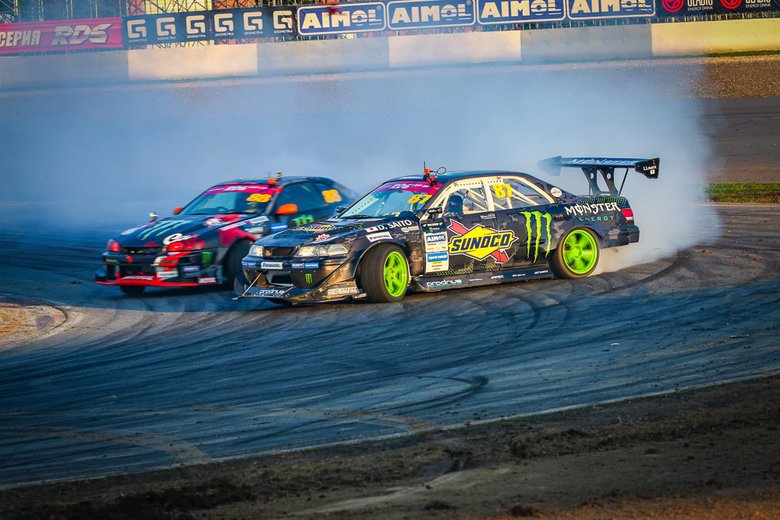
Участие в соревнованиях принял известный японский пилот Дайго Сайто — чемпион Formula D 2012 года и D1 GP 2008 и 2016 годов. Выступал он на автомобиле Toyota Mark II, который для этого был специально доставлен в Россию. На первом этапе РДС Гран При 2018 Дайго Сайто занял третье место.
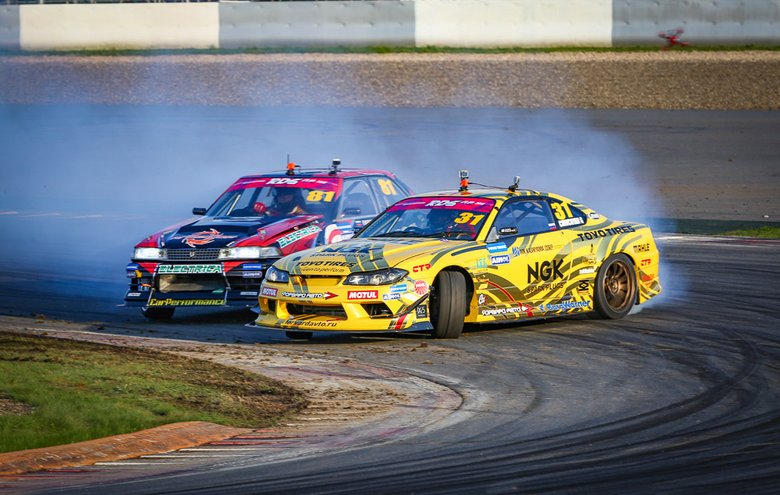
Чемпион Российской Дрифт Серии 2017 Георгий Чивчян выступал на Nissan Silvia S15. Дизайн болида с прошлого года не изменился, а над технической частью поработали, чтобы
сделать автомобиль более мощным, сбалансированным и надежным. В частности установили новую турбину BorgWarner EFR8374, полностью поменяли выхлопную систему. На выходе получилось 700 л.с. и 766 Н•м крутящего момента. На этапе «Гоча» занял шестое место.
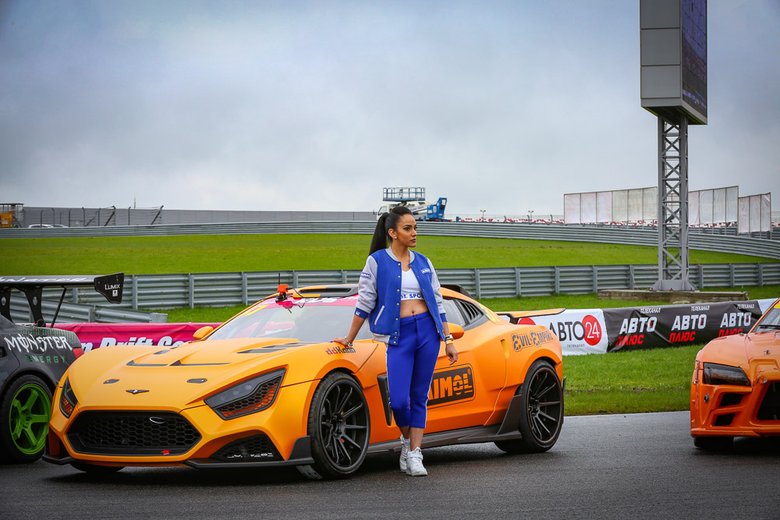
Перед вами Flanker. Его владелец и создатель, Сергей Кабаргин, известный болельщикам дрифта как ddkaba, позиционирует этот болид как первый российский гиперкар. Подвеска, обвес, оптика, интерьер — все спроектировано и изготовлено с нуля. Двигатель подготовлен компанией Mast Motorsports, специализирующейся на постройке кастомных спортивных моторов по индивидуальному запросу заказчика. Коробка передач Samsonas, редуктор Winters.
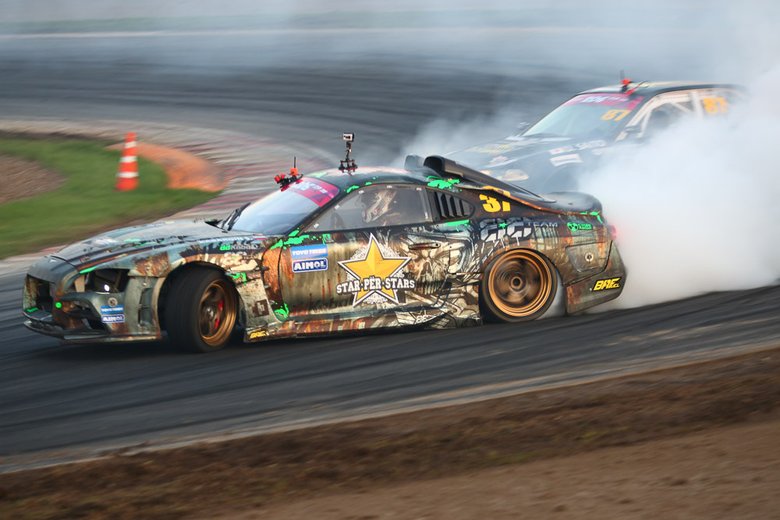
В день парных заездов Сергей Кабаргин выступал на своей Toyota Supra с мотором 2JZ-GTE.
По результатам этапа он занял четвертое место.

Федор Воробьев, выступающий на ВАЗ-2105, за межсезонье основательно доработал свой автомобиль. Например, машина получила обновленный мотор 2JZ-GTE. Планировали выйти на мощность в 600 л.с., но к первому этапу не удалось настроиться из-за проблем с ЭБУ, и пришлось ехать на 450 л.с.
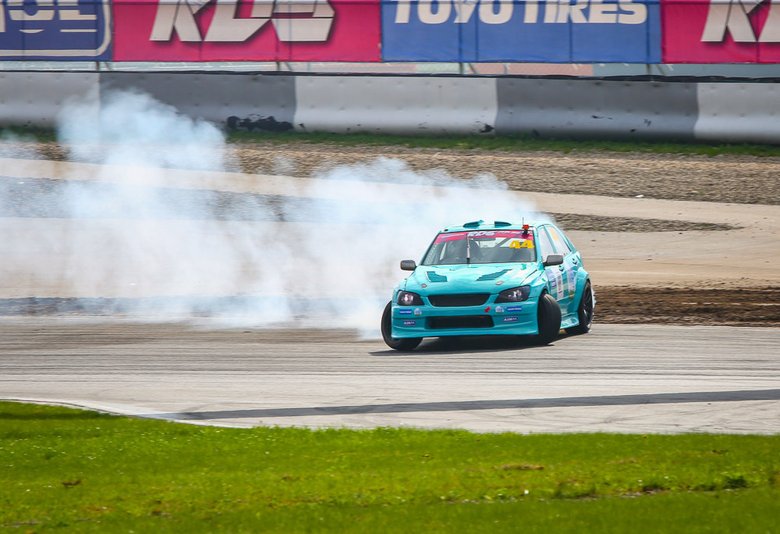
Екатерина Набойченко, дебютировавшая в Российской Дрифт Серии в 2017 году на автомобиле Nissan Skyline, в этот раз выступала на Toyota Altezza с мотором 2JZ-GTE мощностью около 700 л.с.
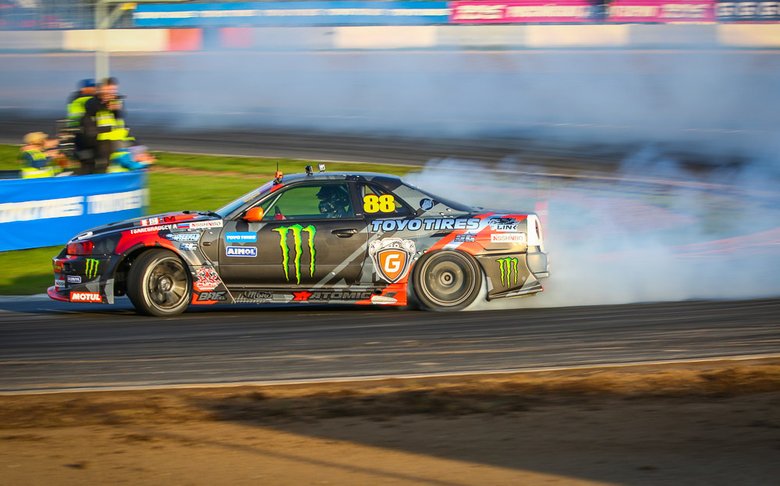
Аркадий Цареградцев, бронзовый призер Российской Дрифт Серии 2017 и обладатель второго места на FIA Intercontinental Drifting Cup 2017, выступил на Nissan Skyline R34. В автомобиль установили новый мотор VR38 от Nissan GT-R 35 с двумя турбинами, подвеску Wisefab спереди и сзади, стойки ST-Suspension. При настройке мотор выдал рекордные 1192 л.с и 1370 момента!
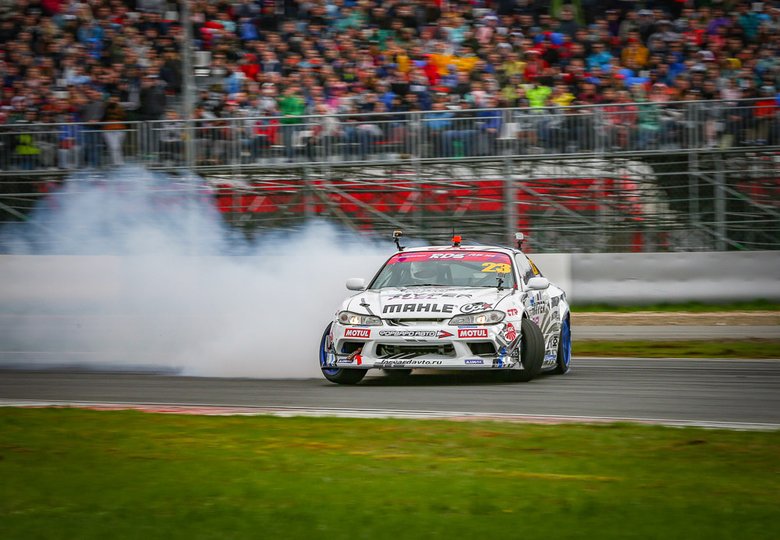
Иван Никулин выступал на Nissan Silvia S15 с двигателем SR20VET мощностью 600 л.с., с турбиной Borg Warner efr 7670. 5-ступенчатая коробка передач TTi модель GTO, редуктор от Nissan GT-R. Впрыск водометанола.
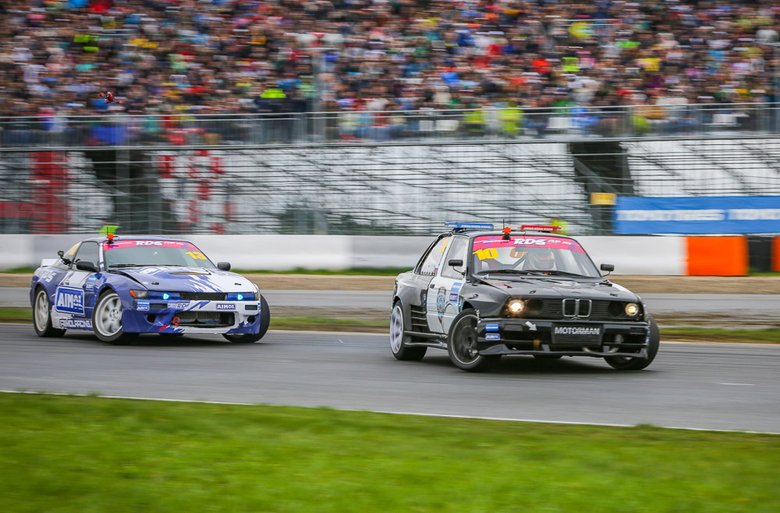
Аркадий Пучинин традиционно управлял BMW E30 в полицейском раскрасе. Под капотом двигатель М60B40 мощностью порядка 500 л.с.
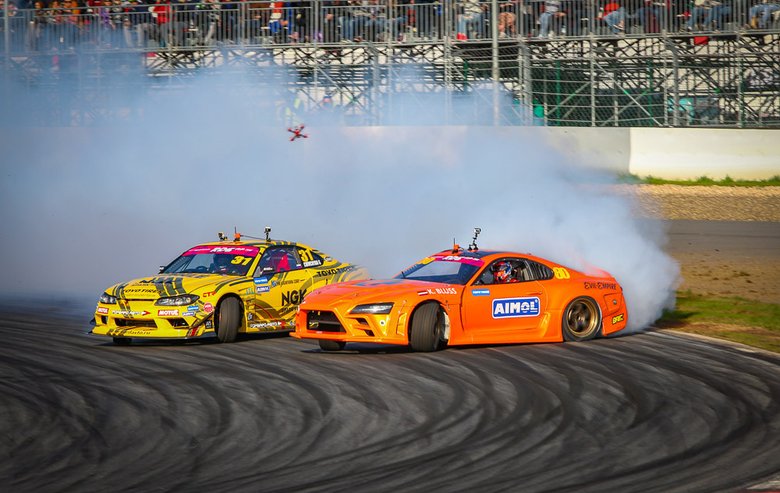
Также в первом этапе принял участие известный дрифтер из Латвии Кристапс Блушс. Он выступал на Toyota Supra.
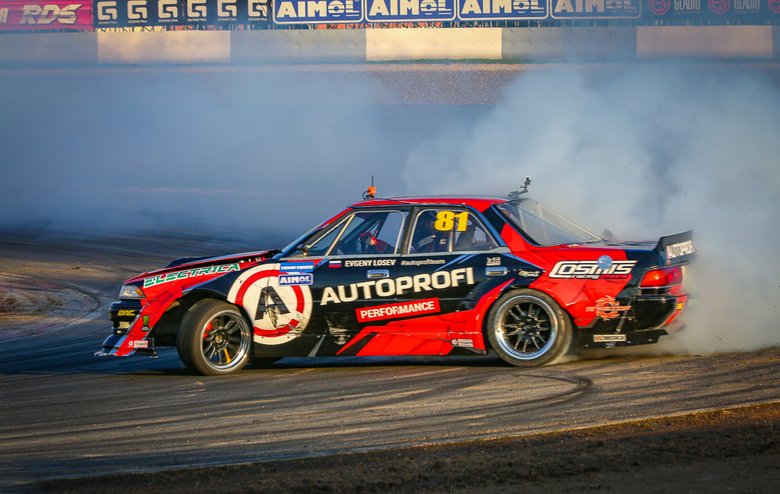
Победителем первого этапа РДС Гран При 2018 стал Евгений Лосев на Toyota Mark II с мотором 2JZ-GTE мощностью 850 л.с.
Второй этап Чемпионата состоится 25-26 мая в Рязани на автоспортивном комплексе «Атрон».

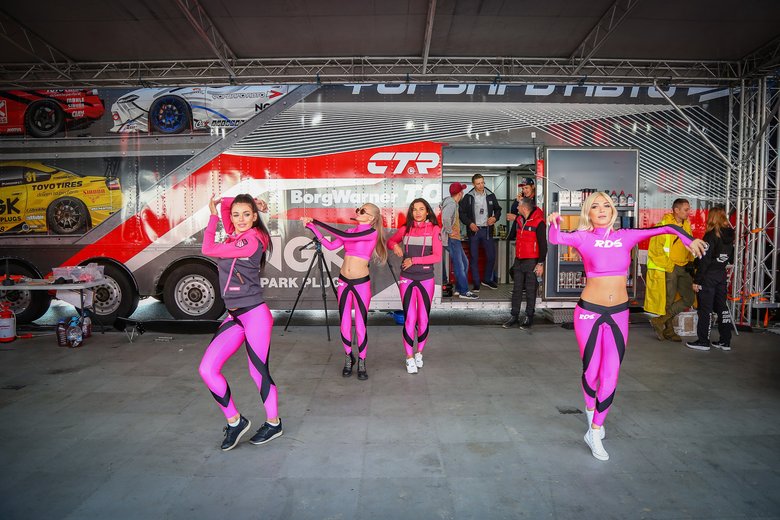
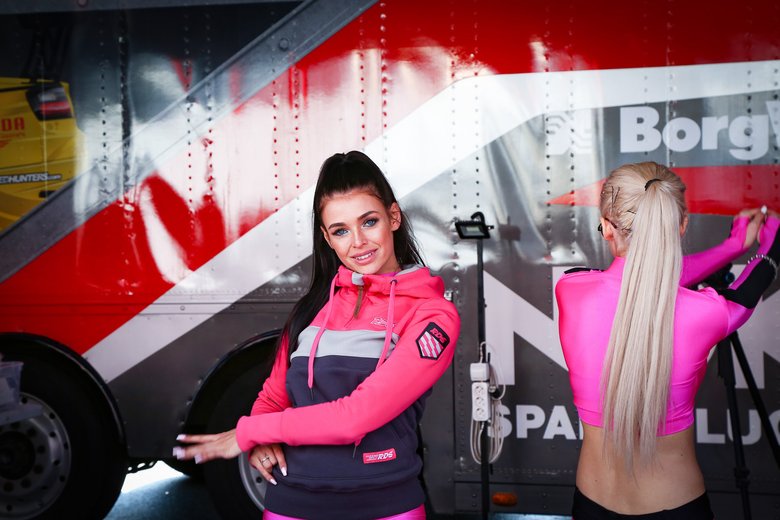
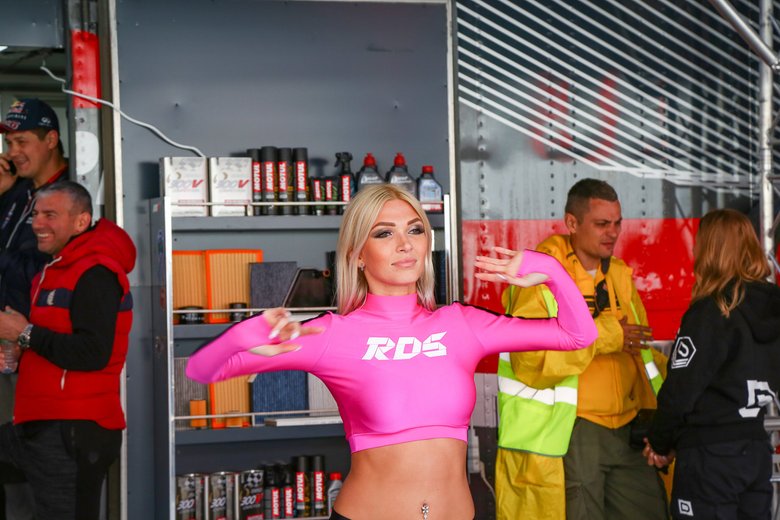
Итак, вы бодро вошли на своем переднеприводном бюджетном седане в поворот и пару метров проскользили задней осью. Вы король дрифта? Увы, но нет. Расскажем о том, что такое настоящий дрифт и чем определяется уровень продвинутости гонщика.
В предыдущей статье мы разобрались, где и как зародился дрифт, кто сформировал его как движение и как культуру, а также на чем ездили и продолжают ездить те, кто не мыслит своей жизни без движения на грани разворота. Сегодня же мы выясним, как делать это правильно, по каким критериям оцениваются заезды на соревнованиях и почему же все-таки ваш дизельный Volkswagen Passat не подходит для дрифта.
Что вообще такое — дрифт?
«Дрифт (англ. Drift) — техника прохождения поворотов и вид автоспорта, характеризующиеся прохождением поворотов с намеренным срывом задней оси и проход в управляемом заносе на максимально возможной для удержания на трассе угла скорости, требующие от автомобиля наличие задней ведущей оси». Так гласит Википедия, и мы с ней согласны.
Английская ее версия дополнительно поясняет: «Автомобиль дрифтует, когда угол увода задних колес превышает таковой у передних, причем зачастую настолько, что передние колеса направлены в сторону, противоположную повороту«. Определение довольно исчерпывающее и правильное, поэтому от него и будем отталкиваться, говоря о понятии дрифта.
Зачем для дрифта задний привод и мощный мотор?
Когда я вижу «девятки» с наклейками Drift King, хочется закрыть лицо руками и убежать. Если вдруг для вас неочевидно, почему же нельзя дрифтить с передним приводом, то я поясню. В заносе, когда вы добавляете газу на переднеприводной машине, траектория движения спрямляется (передний привод вообще во многом для того и придумали), а на заднеприводной занос только «усугубляется«. Но ведь этого-то нам и нужно, не так ли?
Стоит добавить, что срыв задней оси и проход поворота в управляемом заносе требуют не только наличия заднего привода, но и непрерывной пробуксовки задних колес, а это приводит нас к тому, что двигатель объемом 1.2 литра и мощностью 50-90 л.с. вряд ли обеспечит нам желаемое (без боли и страданий, но мы ведь не хотим жертв, правда?). Просто потому, что крутящий момент мотора должен быть достаточно мощным, чтобы преодолеть силу, с которой шины трусливо цепляются за асфальт.
Чем дрифт отличается от силового скольжения?
Вернемся к нашему несчастному дизельному Пассату, который мы привели в начале как автомобиль весьма далекий от дрифта. Тут все просто. Дело в том, что он с момента своего рождения в 1973 году выпускался в основном переднеприводным, исключая редкие специальные модификации. А вот, кстати, для силового скольжения он вполне мог бы подойти.
Но в чем же разница? Само понятие силового скольжения более объемное, чем понятие дрифта, который, по сути, является одним из его видов. Однако многие называют почти любой занос дрифтом, и это — заблуждение. Силовое скольжение (пауэрслайд, от английского powerslide) возникает, когда при прохождении поворота центробежная сила, смещающая автомобиль наружу поворота, превышает силу сцепления колес с дорожным покрытием, что приводит к заносу задних или всех четырех колес.
Решающими параметрами при этом являются вовсе не тип привода или мощность двигателя, а лишь скорость автомобиля и коэффициент сцепления колес с поверхностью. Поэтому, разогнавшись на дедушкином Логане на входе в поворот на дачу (и выжив после этого), нельзя на следующий день хвастаться всем, как классно ты «дрифтанул» вчера.
Положение передних колес при силовом скольжении также мало на что влияет, так как управляемость в нем и его исход зависят в основном от параметров, заданных на входе, таких как скорость, угол поворота руля и использование/неиспользование «ручника«. Таким образом, не претендуя на абсолютную истину, мы разграничим понятия «дрифт» и «пауэрслайд» и в дальнейшем будем говорить исключительно о первом.
Учимся дрифтовать правильно:
Теперь, отделив зерна от плевел, перейдем к техникам дрифта. В их классификации также весьма преуспела уже помогавшая нам ранее энциклопедия, поэтому, отбросив предрассудки, возьмем описания приемов целиком, а затем рассмотрим частные случаи.
1. Hand braking drift. Техника является наиболее простой и предпочтительной для обучения дрифту. Она позволяет исправить допущенные ошибки при недостаточной поворачиваемости колес. Для вызова заноса нужно выжать педаль сцепления, сильным рывком ручного тормоза отправить заднюю ось в занос, после чего отпустить педаль сцепления. Важно при этом поддерживать обороты двигателя при выжатом сцеплении. Основная цель — научиться выбирать скорость и силу рывка ручного тормоза в зависимости от ситуации. Возможно использование серии корректирующих траекторию рывков.
2. Clutch Kick. Резкое бросание сцепления. Благодаря быстрому выжиманию и бросанию педали сцепления при поддержании высоких оборотов двигателя, возникает кратковременный избыток мощности, который срывает заднюю ось в занос.
3. Yorin drift. Скольжение со срывом четырех колес. Торможение в повороте скольжением со сносом всех четырех колес, когда машина полностью срывается в середине поворота.
4. Kanteria / feint drift. Раскачка, или «xлыст«. Занос, при помощи которого проходятся S-образные повороты. В данном случае занос в одну сторону является подготовкой для поворота в другую. Такая техника также используется в ралли.
5. Breaking Drift. В ходе выполнения этого приема тормоз нажимается во время вхождения в поворот, затем выжимается сцепление и включается «ручник» одновременно («ручник» нельзя держать больше секунды).
6. Dynamic drift. Осуществляется путем резкого сброса газа на въезде в длинный поворот, корректировок рулем и своевременным поддержанием заноса короткими нажатиями на тормоз без использования подгазовок.
7. Power over drift. Этот вид дрифта используется на машинах с высокой мощностью. Для входа в силовой занос нужно вывернуть руль в ту сторону, куда нужно направить машину, и нажать на газ до упора. Благодаря высокой мощности двигателя, задние колеса потеряют сцепление с дорогой. Чтобы выйти из поворота, не повредив машину, нужно отпустить газ, но не до конца, и повернуть руль в противоположную сторону.
8. Side braking drift. Боковое скольжение. Вариант дрифта, когда происходит срыв задних колес и машина скользит почти боком.
9. Chokudori. Обычно используется после проезда прямого участка дороги, чтобы снизить скорость и выполнить глубокий занос. Торможение посредством скольжения и выставления машины под нужным углом относительно дороги для наиболее выгодного прохождения самого поворота.
10. Manji. Выполняется на прямой дороге, когда водитель раскачивает машину от одной стороны дороги до другой. Обычно используется на показательных выступлениях по дрифтингу.
Как мы видим, приемов и техник в дрифте великое множество, но не стоит думать, что они используются обособленно. Каждый заезд — это сочетание перечисленных выше «фишек«, помогающее пройти трассу наиболее эффектно и эффективно. В целом все их можно свести к нескольким базовым приемам: резкое открытие газа, использование ручного тормоза, резкий сброс газа для разгрузки задних колес и потери ими сцепления, а также контрсмещение.
Контрсмещение вообще является очень важным и действенным приемом в мото- и автоспорте. Особенно важна эта техника в ралли, откуда она, собственно, и пришла в дрифт. Суть ее в том, что перед поворотом пилот преднамеренно производит легкое (или сильное, вплоть до выставления автомобиля боком) смещение автомобиля в сторону, противоположную повороту, а затем, резко выкручивая руль в сторону поворота, создает избыточную поворачиваемость и вызывает занос. В ралли этот прием позволяет быстрее и эффективнее проходить крутые повороты. В дрифте же он, как вы поняли, применяется для создания заноса, которым далее и управляет гонщик.
И еще немного истории дрифт-соревнований:
Теперь вернемся к нашим японцам. К 1988 году «Король дрифта» Кэйити Цутия совместно с Даидзиро Инада добились значительных успехов в популяризации дрифта как вида автомобильных соревнований, и результатом этого стала организация первых в Японии (а, соответственно, и в мире) соревнований, ставших прообразом будущей серии D1 Grand Prix.
Соревнования подразумевают правила и судейство, и судьи были достойными — кто, как не Цутия, мог по праву занять судейское кресло. Правила сформировались тогда же и с тех пор претерпели мало изменений.
Сначала заезды были одиночными, но спустя некоторое время дрифт-соревнования пришли к формату «дуэли«, когда в заезде одновременно принимают участие два гонщика, соревнующиеся между собой и получающие очки по результатам прохода трассы. Судьи при этом оценивают четыре основных параметра: траектория, угол, скорость и зрелищность (стиль). Именно за этими четырьмя сухими словами скрывается вся безудержная, бурлящая, феерическая стихия дрифта.
Траектория — это соответствие движения автомобиля заданной линии, которая обычно определяется судьями перед заездами.
Угол — это, соответственно, угол, под которым движется автомобиль относительно траектории.
Скорость — параметр, не нуждающийся в представлении, тут все просто: надо БОЛЬШЕ скорости!
Ну а зрелищность и стиль — это то, ради чего и проводятся все эти соревнования, стираются тонны покрышек и сжигаются килотонны бензина. Зрелищность оценивается не только судьями, но и зрителями, которые могут не согласиться с мнением судей и даже немного повлиять на их решение неодобрительным гулом и возгласами.
Ведь порой судьи настолько заняты «разбором полетов«, что их работа сводится к тому, что вынесено в цитату выше — выявлению ошибок. И это простительно, ведь аудитория всегда напомнит, что они не на соревнованиях по кёрлингу, и главное — не сантиметры отклонения от линии и градусы угла, а захватывающая атмосфера борьбы и клубы дыма из-под колес. Кстати говоря, прекрасной практикой дрифт-соревнований является проезд по трассе грузовичка, собирающего «урожай» оторванных бамперов, потерянных спойлеров и других внезапно демонтировавшихся запчастей, без которого не обходится ни одно уважающее себя мероприятие.
Настоящий дрифт-кар:
Раз уж мы заговорили о запчастях, стоит немного рассказать о том, что вообще представляет собой автомобиль для дрифта. Это, как мы уже поняли, заднеприводный автомобиль с мощным двигателем, как правило, максимально облегченный (насколько это разрешено здравым смыслом или правилами конкретной серии) и подготовленный к заездам. Слово «подготовленный» в данном случае может подразумевать разную степень «готовности» в зависимости от бюджета и уровня соревнований, но доводка машины обычно весьма объемна и серьезна.
Одной из основополагающих составляющих дрифт-кара является… нет, не двигатель, а задний дифференциал. Именно он обеспечивает пробуксовку одновременно двух задних колес, без которой нельзя добиться ни продолжительного управляемого заноса, ни успехов в соревнованиях. Обычно используется дифференциал с повышенным внутренним сопротивлением (его еще называют LSD, от английского «limited-slip differential«), который позволяет несколько варьировать пробуксовку колес, но не позволяет одному из них «бездельничать«. В упрощенных случаях используется принудительная механическая блокировка дифференциала, которая заставляет оба колеса задней оси вращаться синхронно, с одинаковой скоростью. В особо упрощенных случаях дифференциал банально заваривают, тем самым ликвидируя его функции практически полностью, но добиваясь столь желаемого синхронного вращения обоих задних колес.
От дифференциала перейдем к двигателю. Двигатель автомобиля для дрифта должен выдерживать высокие нагрузки, при этом работая максимально долго, так как он не меняется после каждых соревнований, как это может происходить в профессиональных автогонках с огромными бюджетами. Исходя из этого, предпочтение обычно отдается объемным двигателям, так как они позволяют получить большую мощность при большем ресурсе, а также выдают ее в широком диапазоне оборотов, что крайне важно для поддержания управляемого заноса на разных скоростях. Двигатели часто оснащаются наддувом, при этом основной задачей остается «размазать» их максимальную производительность по всем оборотам, сделав график крутящего момента как можно более плавным.
Коробка передач также зависит от бюджета и правил определенной серии соревнований. Она может быть как стоковой, так и спортивной, и поскольку переключение передач не должно отнимать у пилота много времени, вполне оправдано использование секвентальных КПП.
Подвеска, как правило, занижается для повышения устойчивости автомобиля в повороте. Амортизаторы и пружины устанавливаются жесткие, чтобы избежать раскачки и валкости, которая негативно скажется на управляемости. Рулевое управление часто дорабатывается с целью увеличения угла поворота колес. Да-да, это тот самый «выворот«, который порой достигает 90 градусов и более и которым хвастаются не меньше, чем объемом двигателя. Также для лучшего контроля автомобиля с вывернутыми колесами развал передних колес делают отрицательным, ставя колеса «домиком«.
В целом все вышеперечисленные модификации позволяют создать примерный образ автомобиля, который может успешно «валить боком«. Конечно, есть и другие способы радикально улучшить скорость и управляемость, такие как желтая краска и фирменные наклейки, но о них мы расскажем в нашем следующем материале, посвященном дрифту в массовой культуре и повседневной жизни.
Источник
Автор вопроса: Диляра Вишневская
Опубликовано: 01/12/2022
Когда День дрифта?
У нас есть 46 ответов на вопрос Когда День дрифта? Скорее всего, этого будет достаточно, чтобы вы получили ответ на ваш вопрос.
- В каком году был придуман дрифт?
- Где был придуман дрифт?
- Где был придуман дрифт?
- Можно ли Дрифтить в России?
- Где зародился дрифт в России?
- Кто такой король дрифта?
- Кто первый придумал дрифт?
- Кто самый лучший дрифтер в России?
- Как сделать дрифт без ручника?
- Почему запрещен дрифт?
- Сколько стоит дрифт кар?
- Как зовут гочу?
- Сколько лет гоче?
- Когда День дрифта? Ответы пользователей
- Когда День дрифта? Видео-ответы
Отвечает Алексей Насыбуллин
Дрифт-день 17 октября14 окт. 2021 г.
В каком году был придуман дрифт?
Дрифт зародился в Японии как нелегальная уличная субкультура в 1980-х годах. Соревновательной дисциплиной дрифт стал там в 2001 году, в 2004-м он пришёл в США. В России про дрифт многие узнали после выхода фильма «Тройной форсаж.
Где был придуман дрифт?
Изначально дрифт как спорт появился в Японии. Так как дрифтинг начал развитие сразу в нескольких городах Японии, то точное место его рождения определить нельзя. В истории происхождения дрифта известны такие горные перевалы, как Ирохазака, Роккосан, Хаконе и все возможные холмистые дороги в Нагано.
Где был придуман дрифт?
Изначально дрифт как спорт появился в Японии. Так как дрифтинг начал развитие сразу в нескольких городах Японии, то точное место его рождения определить нельзя.
Можно ли Дрифтить в России?
— Согласно п. 2.7 ПДД дрифт можно считать опасным вождением, но штраф за это только планируют ввести (3 тыс. рублей). Пока же инспекторам приходится искать поводы для привлечения к ответственности поклонников «дать угла».
Где зародился дрифт в России?
В России дрифт появился примерно так же, как в Японии, только в пять раз быстрее. Согласно легенде, дрифт зародился у подножия Нагано и Фудзиямы в 1960-х, когда уличные хулиганы, соревнуясь друг с другом, стали проходить повороты в контролируемом заносе – на горных серпантинах такая манера позволяет ехать быстрее.
Кто такой король дрифта?
Кэйити Цутия
Кто первый придумал дрифт?
Кэйити Цутия
Кто самый лучший дрифтер в России?
Георгий Тумасович Чивчян (21 января 1986, Красноярск) — российский автогонщик-дрифтер чемпион Сибири 2012 года, трехкратный чемпион России (2011, 2013, 2014), пилот Чемпионата Японии D1GP 2013 года, участник D1GP (2013 , 2014, 2015), чемпион Российской дрифт серии GP 2017, 2018, 2019.
Как сделать дрифт без ручника?
Управляя переднеприводным автомобилем, вы можете имитировать работу ручного тормоза путем торможения педалью левой ногой и одновременной подачи газа. Если вы подаете достаточно газа, ведущие колеса будут вращаться быстрее, соответственно задняя часть автомобиля пойдет в занос.
Почему запрещен дрифт?
По словам эксперта, поскольку подобный стиль вождения может привести к большому количеству пострадавших, прокуратура все чаще стала квалифицировать агрессивное поведение на дороге по ст. 213 УК как хулиганство (до 5 лет лишения свободы).
Сколько стоит дрифт кар?
Дрифт Карт/Drift Cart/Электрокарт Дрифт Кар/Электроскутер Drift Trike DriftCar 30060633 купить за 23 912 ₽ в интернет-магазине Wildberries.
Как зовут гочу?
Георгий Чивчян
Сколько лет гоче?
36 лет (21 января 1986 г.)Георгий Тумасович Чивчян / Возраст
Отвечает Роман Дорош
Дрифт (англ. Drift) — техника прохождения поворотов и вид автоспорта, характеризующийся … Лучшими профессиональными дрифтерами России на сегодняшний день считаются …
Отвечает Денис Хилов
Формирование дрифта как профессионального спорта … Кэйити Цутия до сих пор занимает особое место в дрифт-культуре, эта модель по сей день …
Отвечает Антон Осинцев
Гагарина на закрытой картинг-площадке состоялись соревнования «Gymkhana 2020». Огонь вырывался из выхлопных труб дрифт-авто, а жажда победы …
Отвечает Владимир Машков
В 1999 году была создана серия D-1 Grand Prix, и по сей день остающаяся величайшей всемирной ассоциацией дрифта. Автомобили. К дрифт-кару предъявляется два …
Отвечает Михаил Майор
Тот день стал датой рождения дрифтинга, а до 1970 он уже был внесен в престижный … Первым коронованным Королем дрифта был Микел Феньяли.
Отвечает Владислав Филиппов
14 февраля, в День святого Валентина, Уральская лига дрифта и автотракторный факультет ЮУрГУ собрали всех влюбленных в дрифт в …
Отвечает Сергей Дементьев
Судьями выступили профессиональные дрифт пилоты, победители и призеры DriftMatsuri SPB. Эксперты оценивали траекторию, угол, скорость и общее …
Отвечает Александр Бабашов
Дрифт-трек-день … Первый в истории подмосковного автодрома трек-день для любителей дрифта в поворотах пройдет на трассе 29 апреля, в преддверии …
Отвечает Анна Ковалёва
Дрифт трек-день – 28 апреля, Москва, 13000 р. … по дрифту RDS GP на автодроме Moscow Raceway 28 апреля пройдет трек-день для дрифтеров.
Отвечает Денис Муравьёв
Дрифт-день 17 октябряOct 14, 2021
Отвечает Наталья Франц
Питерский дрифт: День зимних видов спорта на автодроме … трасса «Автодром Санкт-Петербург» собрала на своей площадке лучших дрифт пилотов.
Отвечает Роман Кучера
14 февраля, в День святого Валентина, Уральская лига дрифта и автотракторный факультет ЮУрГУ собрали всех влюбленных в дрифт в …
Отвечает Денис Вайнберг
Обратите внимание, в день соревнований попасть на аттракцион дрифт-такси можно только при наличии билета на трибуны;; Дети до 5 лет в сопровождении взрослых …
Отвечает Артём Злобин
Внимание, новость для участников по зимнему дрифту: 7 января вместо соревнования Burning Ice Challenge пройдет дрифт трек-день. Трек-день …
Отвечает Мария Каракоз
Проведите трек-день в максимально комфортных условиях: мы предоставляем просторные боксы с необходимой инфраструктурой. Для бронирования боксов направьте …
Отвечает Роман Слуцкий
В День Города москвичам покажут дрифт-шоу. 22.08.2012 Впервые в рамках празднования Дня города Москвы 1 сентября в столице состоится …
Отвечает Степан Латыйпов
Кто отец дрифта? Кэйити Цутия (яп. 土屋 圭市 Цутия Кэйити, 30 января 1956, Нагано, Япония) — японский автогонщик, легенда дрифтинга, …
Отвечает Кисловский Лехнер
Сегодня день рождения празднует руководитель Российской Дрифт Серии Дмитрий Андреевич Добровольский. Желаем больше дрифта, угла и дыма!
Отвечает Евгений Злобин
Официальная группа Чемпионата УрФО по дрифту. Telegram: t.me/uraldrift_official … Внимание! Сегодня последний день регистрации как гостей, так и зрителей!
☀ Один день ДРИФТА. [Drift Day]
Один день на треке — столько впечатлений! У всех разное хобби — вот эти парни жгут резину на треке. Крутые обклеянные …
Настоящий ТАРИФ «ДРИФТ-такси» на 1 день | SHARK DRIFT
Видео развлекательного характера. Все трюки в ролике выполнены профессионалами. Все участники, а также участники …
ЧЬЯ СЛИВА БАЛАБОЛ? СИЛЬВИЯ БОЛЬШЕ НЕ МОЯ…
МОЙ ИНСТ: https://www.instagram.com/vakhrushevdrift/
РАССЛЕДОВАНИЕ! ПОЧЕМУ ЛЁГ МОТОР НА РИВЕ?
#STILOVDAILY ep1234 Вступайте в мой паблик ВК https://vk.com/stilovdaily Там всегда самая свежая инфа и много фото!
Один день с японкой Арисой — Дрифт в Японии | Автомобили в Японии
ПОЧТА ДЛЯ СВЯЗИ: [email protected] ПОДПИСЫВАЙТЕСЬ НА СОЦИАЛЬНЫЕ СЕТИ Telegram: …
ЛИТВИН / ДРИФТ НА М8 / 80 LVL / Shorts
ЛИТВИН И НОВЫЕ ПРАНКИ. ЛИТВИН ВЕРНУЛСЯ В МОСКВУ. ДРИФТ НА ТРЕКЕ. БЕХА НА ТРЕКЕ. ДРИФТ НА М8.
САМЫЙ ОПАСНЫЙ ДРИФТ В МОЕЙ ЖИЗНИ ! РАЗБИЛ М8 ?!
#литвин #влог #дрифт ————————————————————————— По вопросам рекламы писать сюда: …
ДЕБЮТАНТ RDS EUROPE ВЫИГРАЛ 3 ЭТАП | TimeUP
Приключения нашей команды на RDS EUROPE 2022! Наконец-то выехали в полном составе в 3 машины! На этот раз …
Мой первый день в ДРИФТ ШКОЛЕ! Кажись я встрял.
#driftschool #дрифт #banger.
История Российского Дрифта. Как начинали Гоча, Аркаша и остальные Красноярцы? Серия 5.
Всем привет! Добро пожаловать на цикл авторской, многосерийной передачи «История Российского Дрифта«. Автор и …
Как научиться дрифтить как Аркадий Цареградцев. Дрифт для новичков. Элементы дрифта. Как дрифтить
Как дрифтить или как научиться дрифтить и стать как Аркадий Цареградцев? Хочешь? Начинающие дрифтеры наверняка …
ПЕРВЫЙ ДРИФТ (Анимация)
В 2011м году мы с пацанами сняли и смонтировали дрифт-видос)) А этот ролик о том, как всё было 
ДРИФТ С НУЛЯ Урок №1 «Как научиться ездить боком?!»
Друзья всем привет, рад вас видеть на своем канале. Я решил пройти вступительный курс обучению «дрифт с нуля» …
Иван Быстров
Здравствуйте! Меня зовут Иван Быстров, и я главный редактор этого сайта. Мне 32 года, я живу в Ярославской области России. Я всегда увлекался автомобилями, всегда хотел узнать больше, но зачастую не мог найти ответы на свои вопросы. Это сподвигло меня на создание проекта, где будет собрано воедино максимальное количество вопросов про автомобили, и на каждый из них будет предложен грамотный ответ! Очень надеюсь, что мой труд поможет всем получить новые знания быстро и без лишних затрат энергии!
Этот пост написан пользователем Sports.ru, начать писать может каждый болельщик (сделать это можно здесь).
От редакции: Привет! Это старт официального блога Российской дрифт серии. Поддержите начинание плюсами и подписками – это будет мотивировть авторов выходить с постами чаще.
Новый сезон главного российского турнира по дрифту не за горами, а значит – самое время начать подготовку к Гран при Российской дрифт серии. Если вы только-только знакомитесь с дрифтом, давайте начнем с азов. Сегодня расскажем о главных терминах из мира управляемого заноса – запоминайте, эти слова помогут быстро разобраться в происходящем на трассах.
Ну а если вы фанат РДС со стажем – отлично, повторим основы!
Техника пилотирования
• Furidashi («фуридаши») – с этого начинается любой заезд в дрифте. Словом «фуридаши» называется инициация заноса в конце разгонного участка. Начать ее важно не раньше и не позже отмеченного отрезка трассы, а от качества исполнения постановки в занос зависит качество и темп заезда как в квалификации, так и в дуэлях.
• Furikaeshi («фурикаеши») – без «фуридаши» невозможно представить себе «фурикаеши». За этим японским словом скрывается смена направления движения в управляемом заносе. Если говорить совсем просто, то «фурикаеши» — тот маневр, который знаком всем под термином «перекладка».
Оверстир, андерстир или бэквард? Ответ на этот вопрос знает только сам пилот.
• Oversteer/Understeer («оверстир»/«андерстир») – слова, которые часто встречаются в автоспорте и обозначают проблемы со сцеплением колес автомобиля с трассой. Если недостаточно хорошо за дорогу держится передняя ось и машину несет наружу поворота, то это understeer или снос. В обратной ситуации, когда сцепление с покрытием потеряли задние колеса, машина отправляется в занос или oversteer.
• Backward («бэквард») – один из немногих дрифтерских терминов, который имеет не японское, а английское происхождение. За «бэквардом» скрывается крайне зрелищная постановка, в момент которой задняя ось автомобиля практически обгоняет переднюю. Если автомобиль правильно настроен, а пилот имеет достаточный опыт, то таким маневром можно порадовать болельщиков и получить кучу фоточек в инстаграм. Но если что-то пошло не так, то «бэквард» закончится в лучшем случае разворотом, а в худшем – аварией.
Целовать стены без последствий под силу только настоящим мастерам дрифта.
• Powerslide («пауэрслайд») – один из способов инициации заноса, в котором основную роль играет мощность двигателя. Если табун лошадей под капотом достаточный, а настройки подвески подобраны правильно, то спровоцировать скольжение можно за счет «пауэрслайда». Клубы дыма из-под колес и респект зрителей гарантированы.
• Kansei («кансей») – если «пауэрслайд» позволяет отправить машину в занос за счет мощности двигателя, то «кансей» работает на контрасте с этим методом. Здесь занос начинается за счет вывернутого руля и одновременного резкого сброса газа. Если вы хоть раз смотрели культовое аниме Initial D, то с «кансей» вы знакомы как минимум на картинке.
• Kiss the wall – в прямом смысле «поцелуй стены», который по силам только настоящим мастерам дрифта. Во время этого маневра пилот касается задним бампером своего автомобиля отбойника – если удалось дальше продолжить движение, то это желанный kiss the wall. Если касание привело к аварии, то это уже фиаско.
На трассе в Сочи из-за близости отбойников от скорости работы механиков зависит многое.
Участки гоночной трассы и разметка
• Respect zone («респект зона») – отрезок участка разгона, в котором автомобиль пилота-преследователя должен двигаться в пределах базы машины пилота-лидера. Сделано это для того, чтобы нивелировать возможную разницу в мощности и разгонной динамике двух автомобилей, обеспечив максимально синхронный разгон и минимальное расстояние между участниками заезда на «постановке» в занос.
Пройти так клиппинг-зону – значит, получить от судей хороший балл.
• Clipping zone («клиппинг зона») – это часть оцениваемого участка, расположенная обычно внутри траектории движения автомобилей, через которую оба пилота должны проехать. Дрифтерам необходимо двигаться через нанесенную на асфальт разметку, которую из-за вида трех белых полосок часто называют «адидасами». Причем чтобы судьи зачли прохождение «клиппинг зоны», ее важно преодолеть через короткие стороны разметки. Удается это не всем и не всегда.
• Touch and go («тач-н-гоу») – зона оцениваемого участка, разметку которой пилоты должны преодолеть хотя бы одним задним колесом. Обозначается на трассе прямоугольником. Обычно «тач-н-гоу» располагаются снаружи относительно траектории движения автомобилей и призваны не дать лидеру смещаться внутрь, лишая этим преследователя возможности ехать плотно и синхронно.
Cлева в кадре видны два прямоугольника тач-н-гоу, а справа – «адидасы» клиппинг зоны.
Правила соревнований
• Senko («сенко») и Atooi («атой»), они же leader и chaser, они же лидер и преследователь. Проще говоря, лидер – это пилот, который в парном заезде двигается по трассе первым и задает темп и траекторию. Логично, что преследователь в парных заездах едет вторым, стараясь удержаться за машиной впереди. Любой участник РДС, если он прошел квалификацию и вышел в стадию топ-32, как минимум один раз должен примерить на себя роль «сенко» и «атоя».
• Tanso («тансо») и Tsuiso («тсуисо») — японские термины, имеющий английский аналог solo run и tandem run. Как ясно из названия, первый термин означает одиночные проезды по трассе, а второй – парные заезды. Проще говоря, «тансо» в дрифте называются квалификационные заезды, по итогам которых определяются участники топ-32. А стать свидетелями «тсуисо» можно со стадии топ-32 и вплоть до финала.
• Heat – «хитом» в дрифте называют парные заезды, причем именно их сочетание. Сочетание, при котором один из участников дуэли по очереди проезжает оцениваемый участок сначала в роли лидера, а потом в роли преследователя. Таким образом, в состав «хита» входят два парных проезда. И никак иначе – если участник один, то смотрите bye run ниже.
Типичный хит в дрифте – два пилота одновременно на трассе.
• Bye run («бай ран») — запоминайте, он возможен только в парных заездах. Этим термином называют заезд, в котором участвует только один пилот – либо из-за схода соперника, либо из-за нечетного количества участников в дуэлях. Для успешного прохождения в следующую стадию борьбы пилоту в «бай ране» нужно просто своим ходом доехать до зоны постановки и все.
• One more time — термин, который часто скрывается за аббревиатурой OMT и обозначает перезаезд, если судьи не смогли определить победителя парного заезда. А часто бывает так, что OMT не приходит один. Порой пилоты едут одинаково хорошо (или одинаково плохо) несколько раз подряд, так что судьям приходится неоднократно назначать перезаезды. Регламент RDS GP допускает до трех OMT в одной паре участников.
Опытная команда способна за короткое время восстановить машину после аварии или заменить двигатель после поломки.
• Pit stop («пит-стоп») — широко распространенный в гонках термин, за которым скрывается плановая остановка автомобиля в специально обозначенной зоне трассы. В RDS GP пилотам и командам отводится минута на смену покрышек, проверку состояния машины и общение с дрифтером перед продолжением борьбы. Если в минуту не уложились – либо идет competition time out, либо участника ждет наказание.
• Competition time out – если что-то пошло не по плану и автомобиль сломался во время парных заездов, каждый пилот может один раз за гоночный уик-энд воспользоваться 5-минутным перерывом на ремонт машины. Не уложились в это время – увы, борьба завершена… Но опытные команды способны за время competition time out перебрать чуть ли не половину дрифт-кара, чтобы вернуть своего пилота в борьбу!
• Anikuya («аникуя») – мечта всех пилотов, которые выходят на старт квалификационных заездов. За этим японским словом скрывается достаточно редкое событие, записать которое на свой счет хотят все без исключения дрифтеры. Термином «аникуя» в мире управляемого заноса называется проезд в квалификации с максимальным результатом в 100 баллов. Если тебе покорилась anikuya – твое имя надолго впишут в историю РДС, ведь за последние два года в дрифт-серии никто в квалификации на 100 баллов так и не проехал.
Этот ролик даёт отличное представление о фуридаши (01:19), фурикаеши в парных заездах (01:36) и, конечно, о работе команд во время пит-стопов и competition time out (02:43)
Конечно, этой двадцаткой слов лексикон дрифта не ограничивается, но и перечисленных терминов вам хватит на первое время, чтобы ощутить себя профи во время просмотра трансляций на RDS TV и в живых дискуссиях на трибунах. Есть вопросы – пишите в комментариях, и мы на них ответим.
Ну и не забывайте подписываться на блог RDS GP. Дальше будет интереснее – расскажем, что такое оцениваемый участок и раскроем все секреты судейского задания, а кроме того, будем держать вас в курсе событий нового сезона РДС и подготовке наших пилотов к чемпионату 2022 года.
Всем дрифт!
Фото: RDS GPLukoil Racing Team

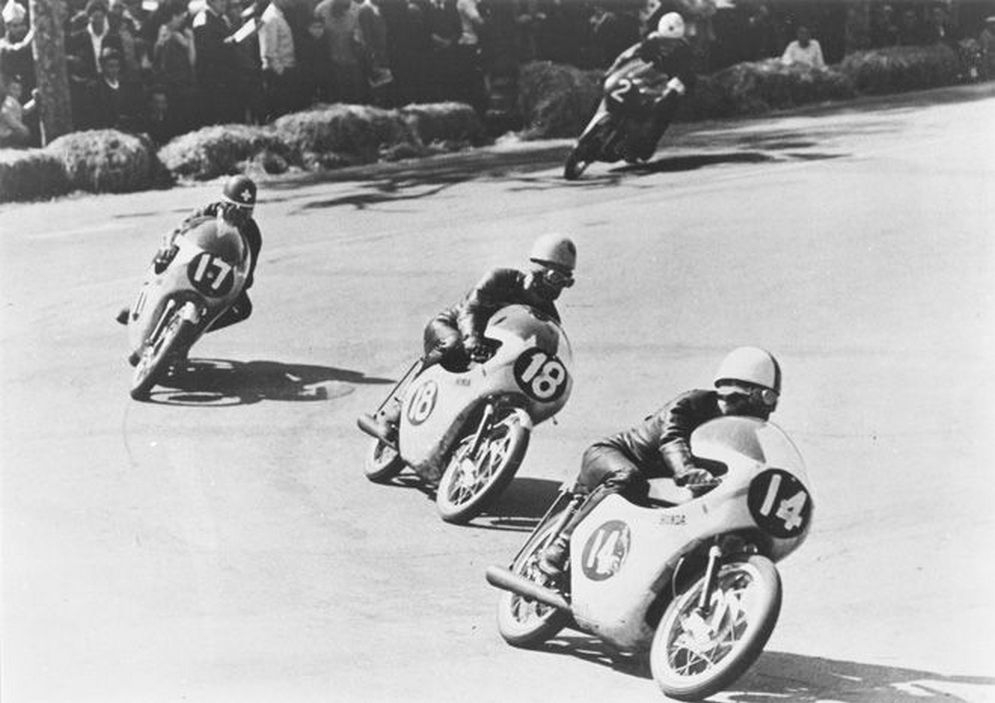
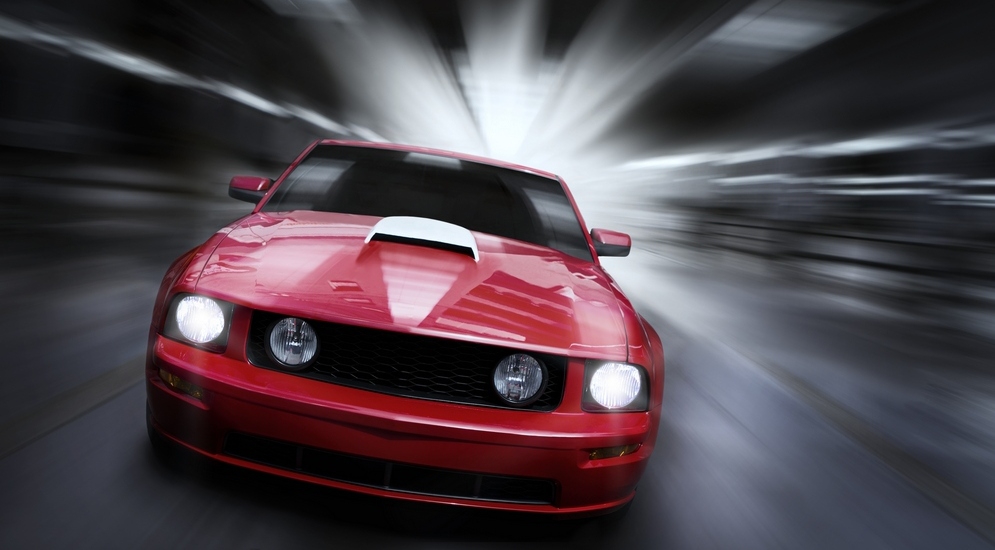
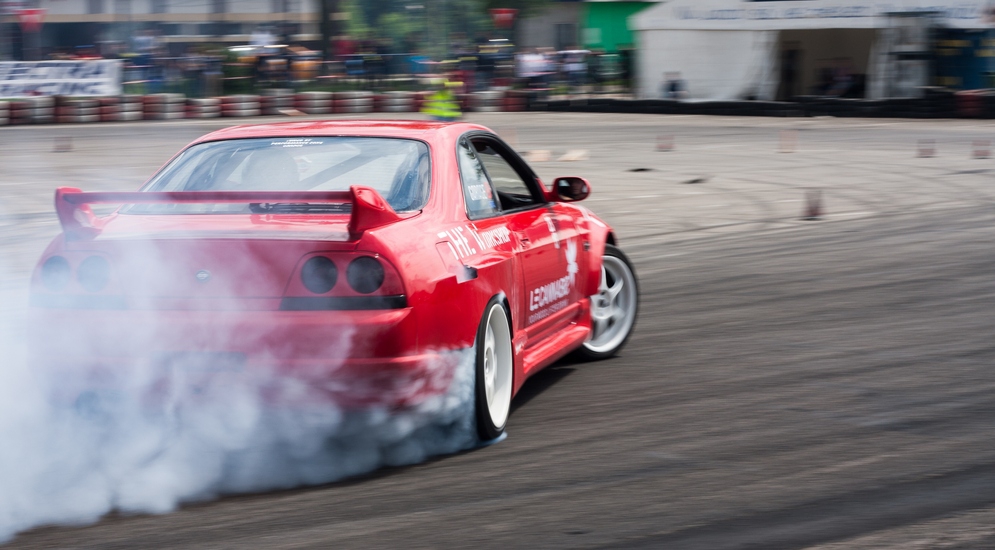
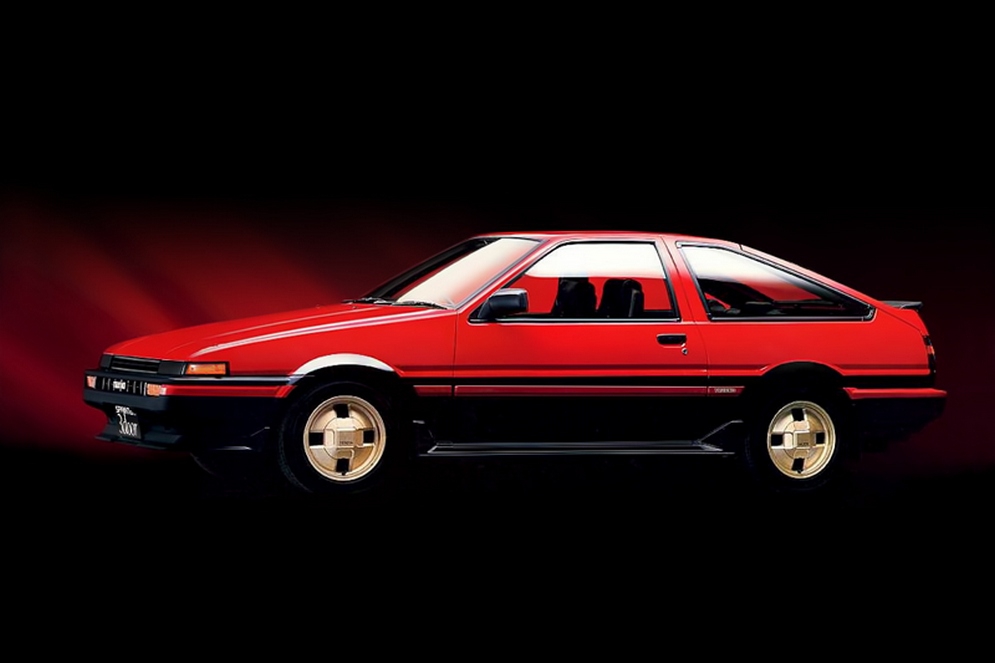
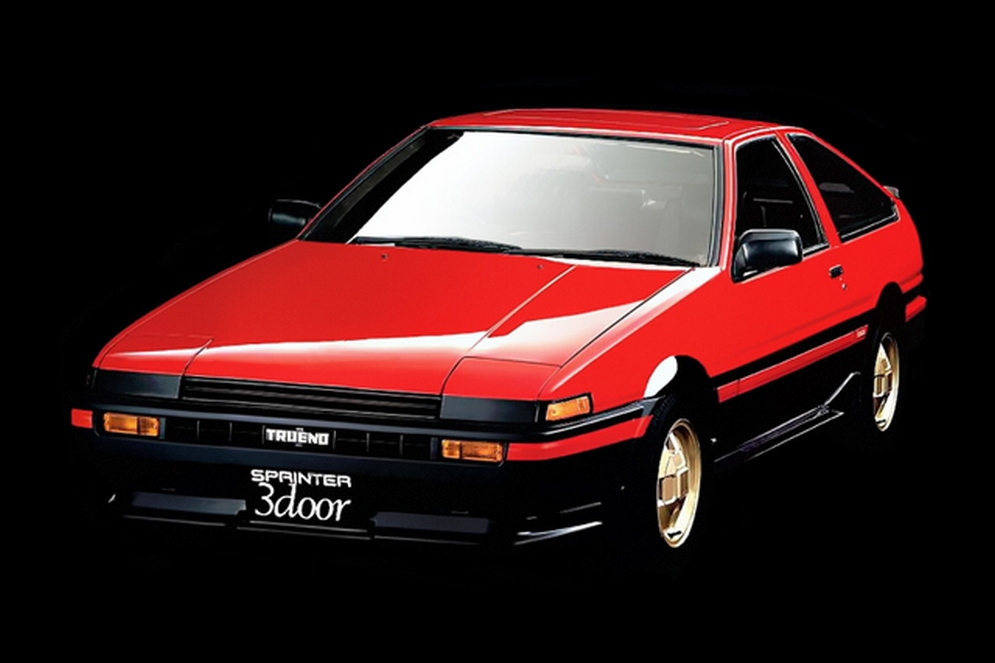
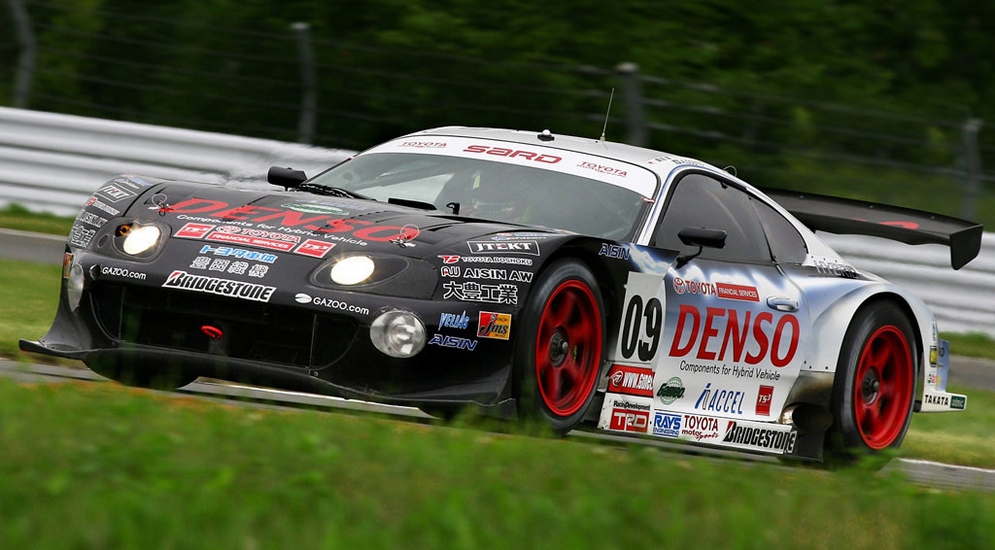
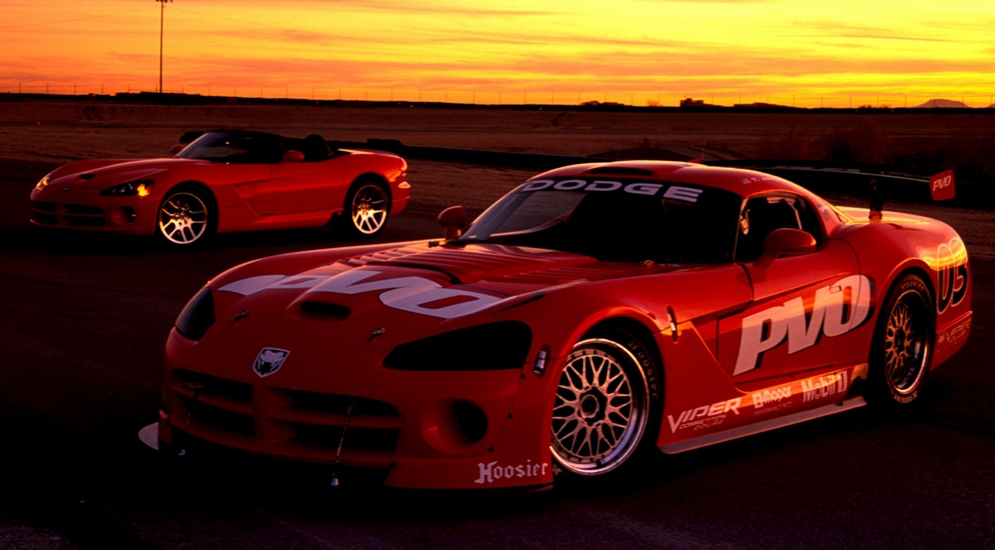
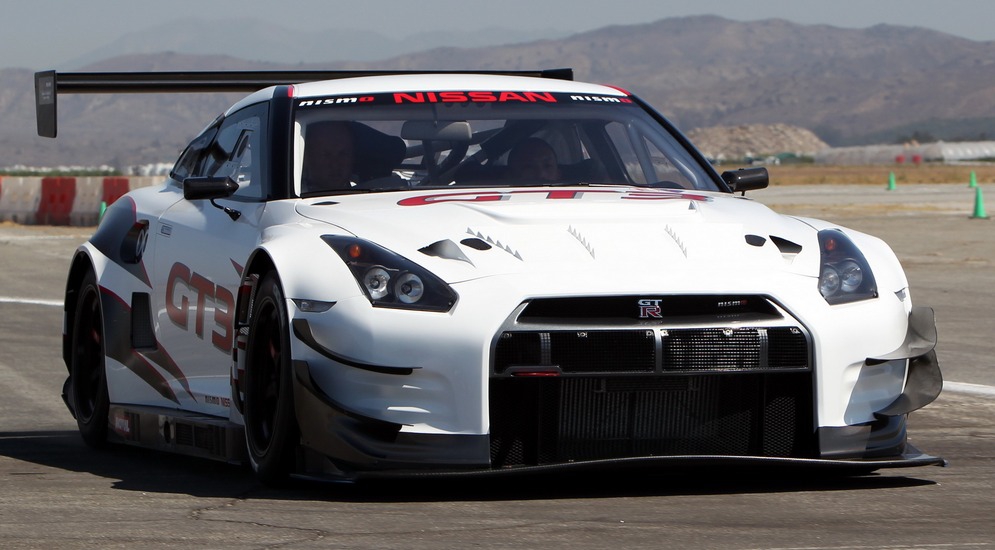











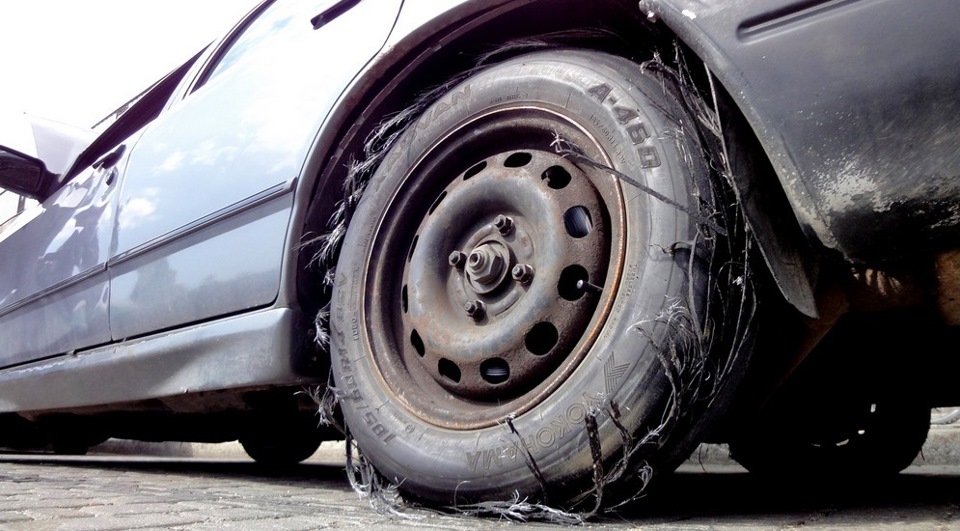
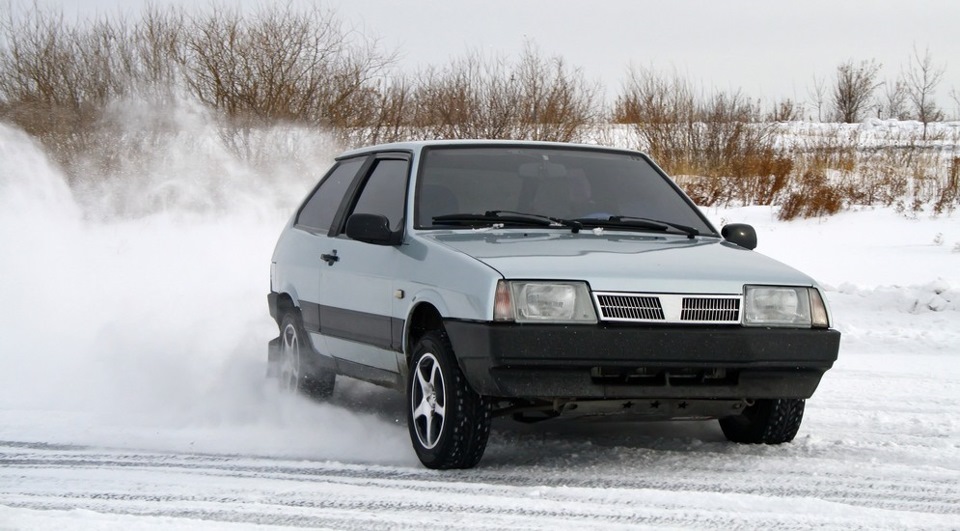
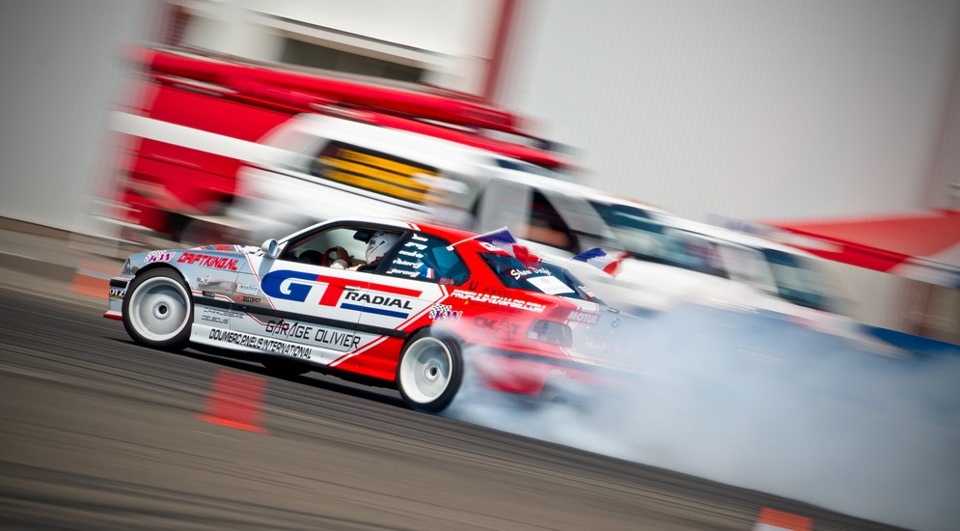

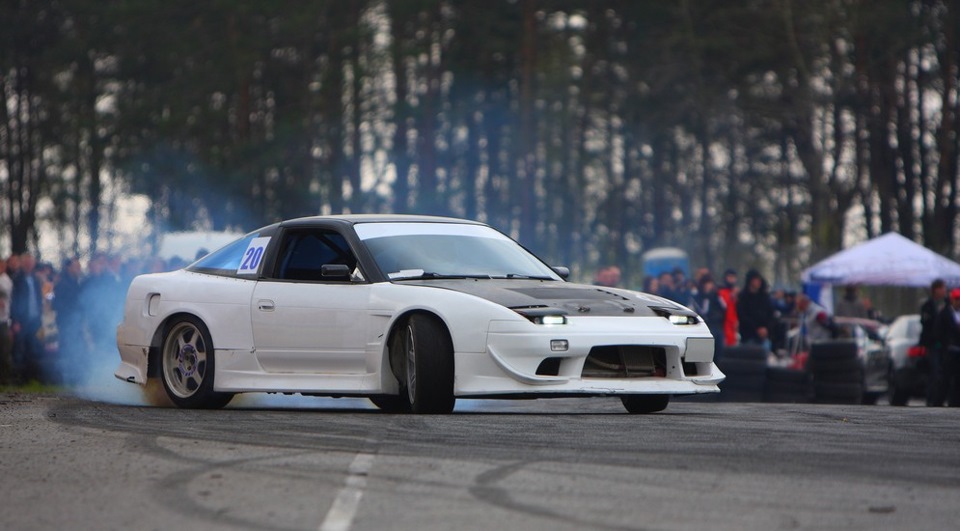
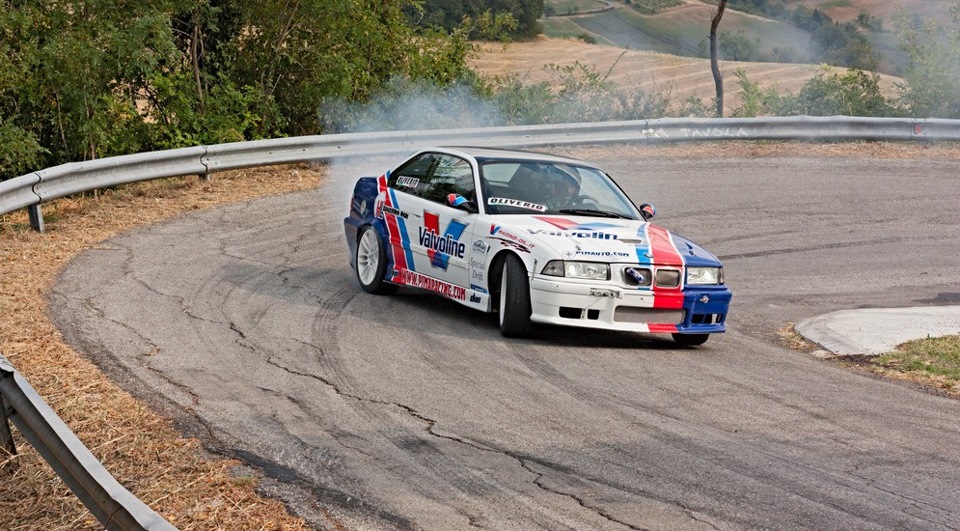

![☀ Один день ДРИФТА. [Drift Day]](https://i.ytimg.com/vi/QwN2CY5vUBc/hq720.jpg?sqp=-oaymwEcCOgCEMoBSFXyq4qpAw4IARUAAIhCGAFwAcABBg==&rs=AOn4CLDALoEV1wydspbAYCidBuNFxjuCxA)



















